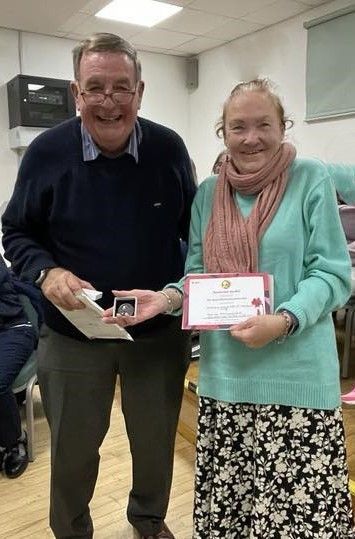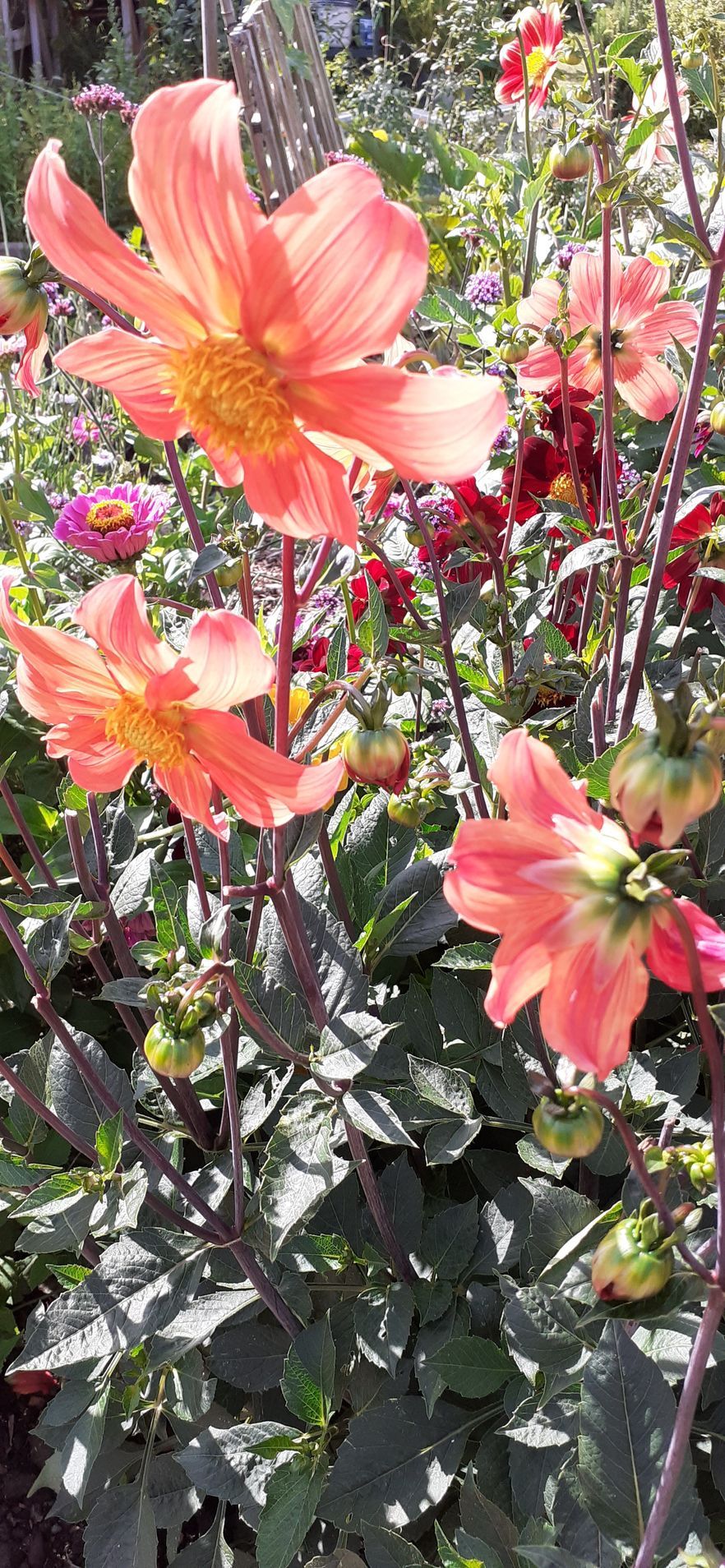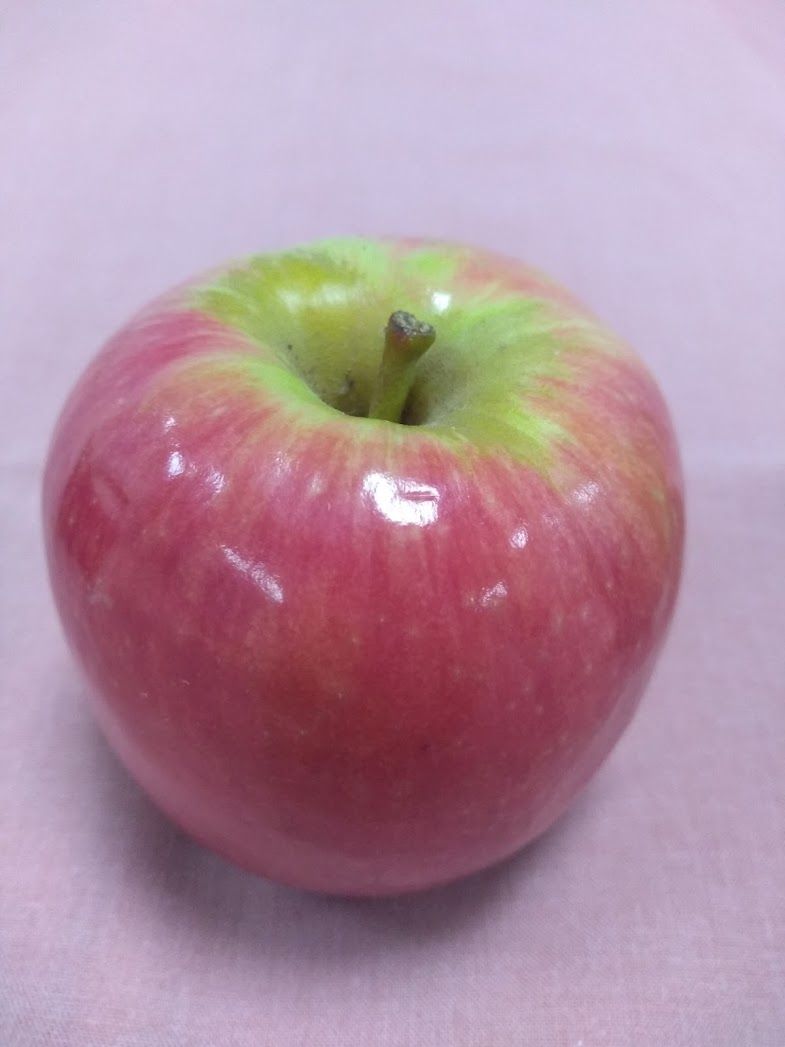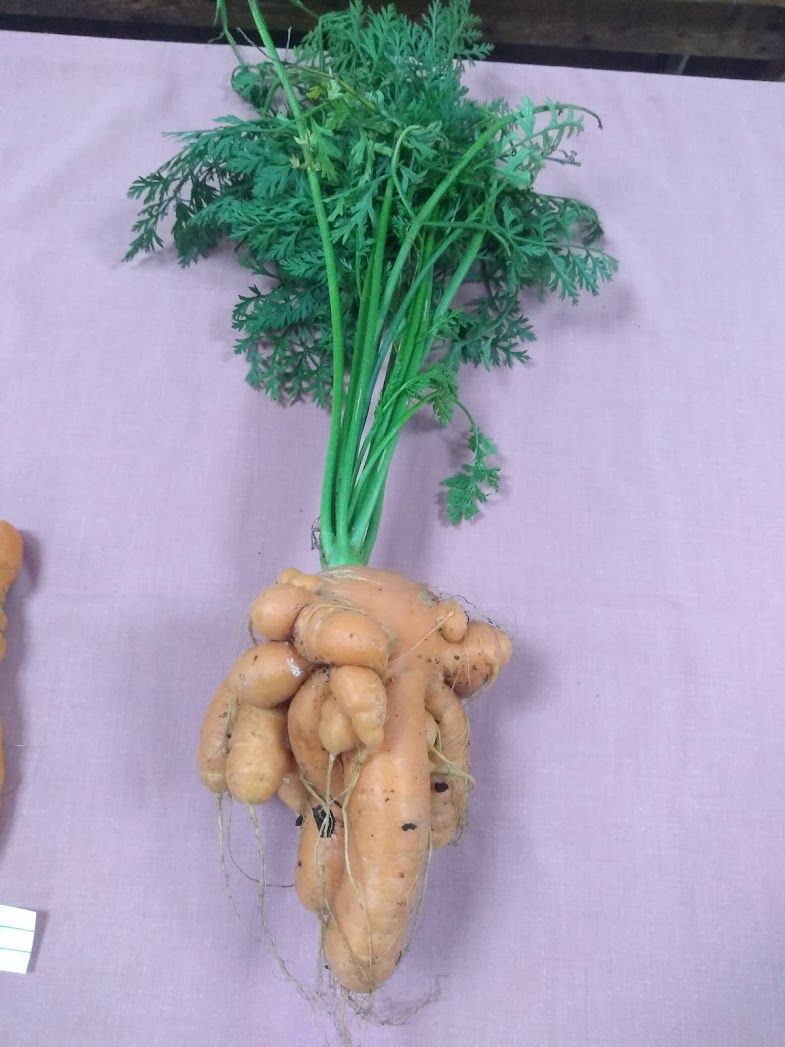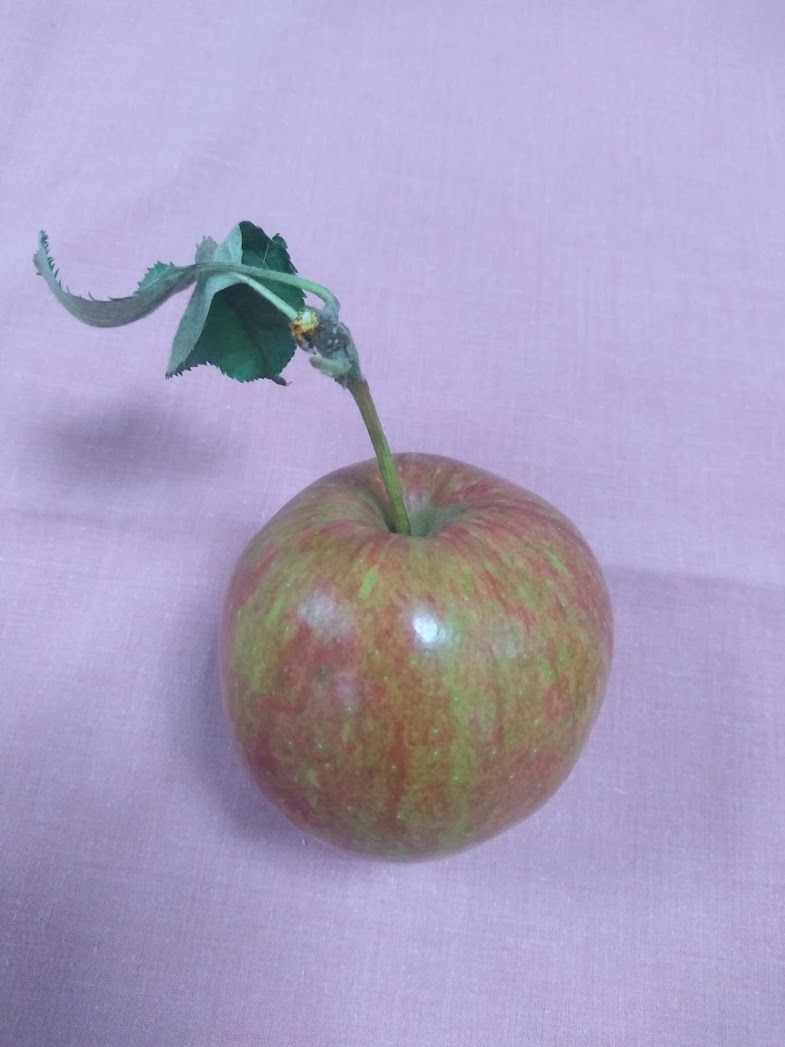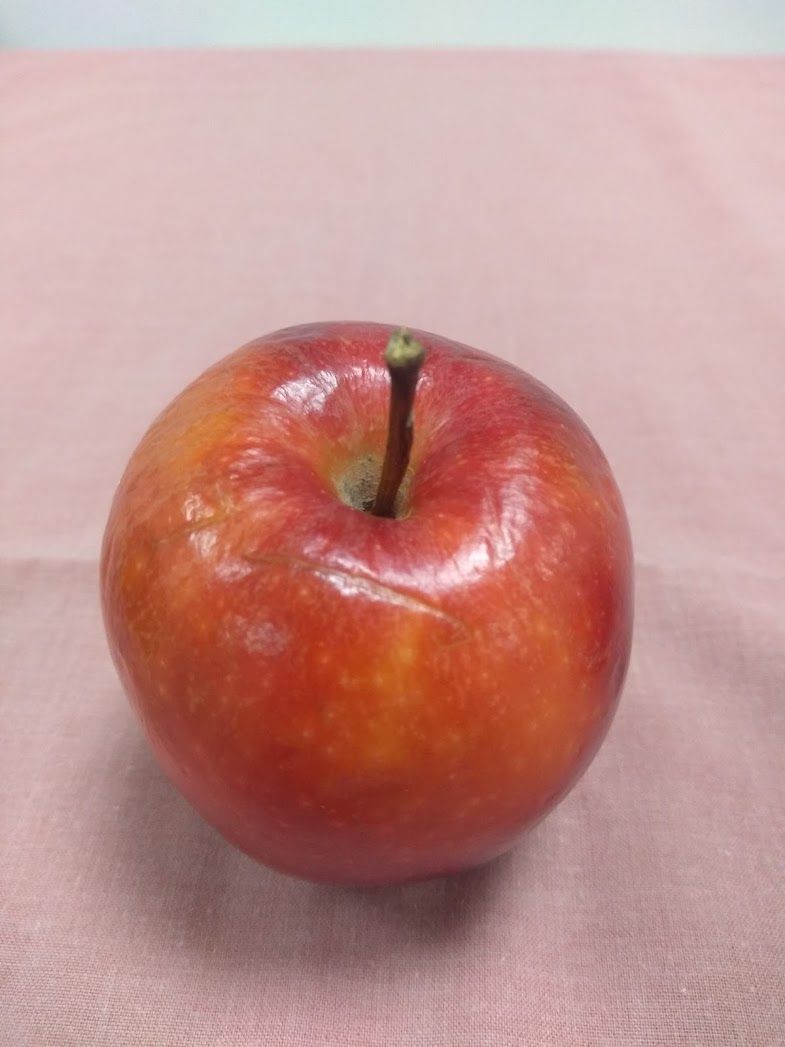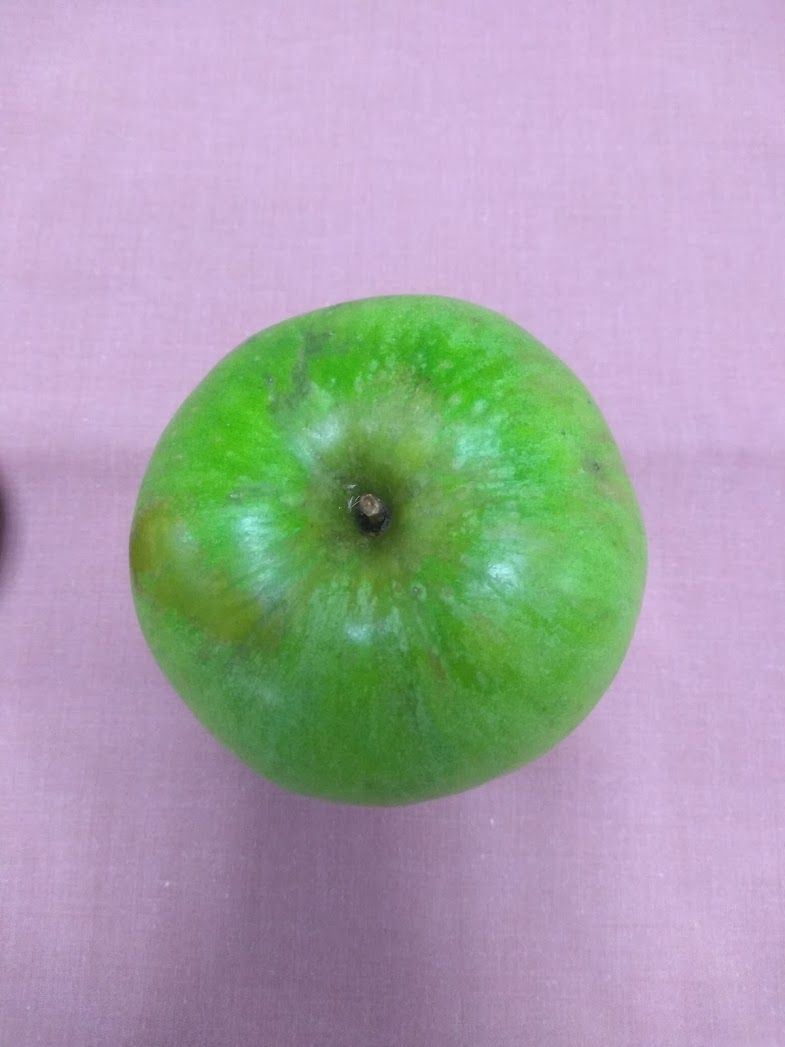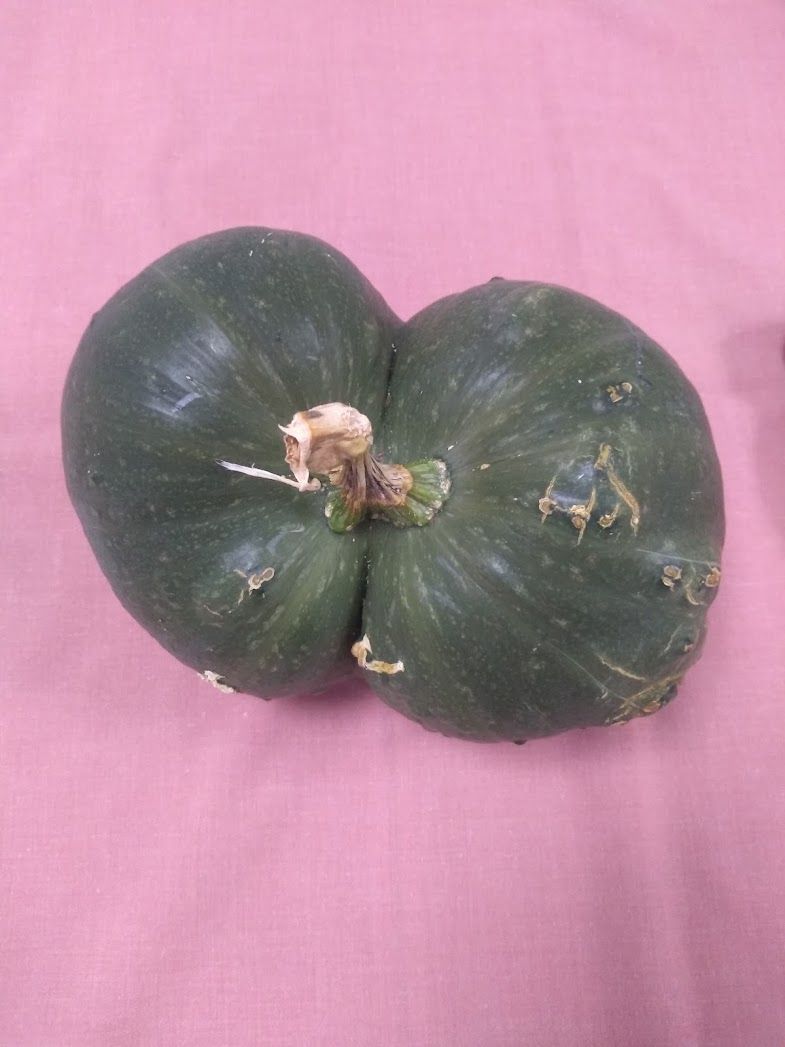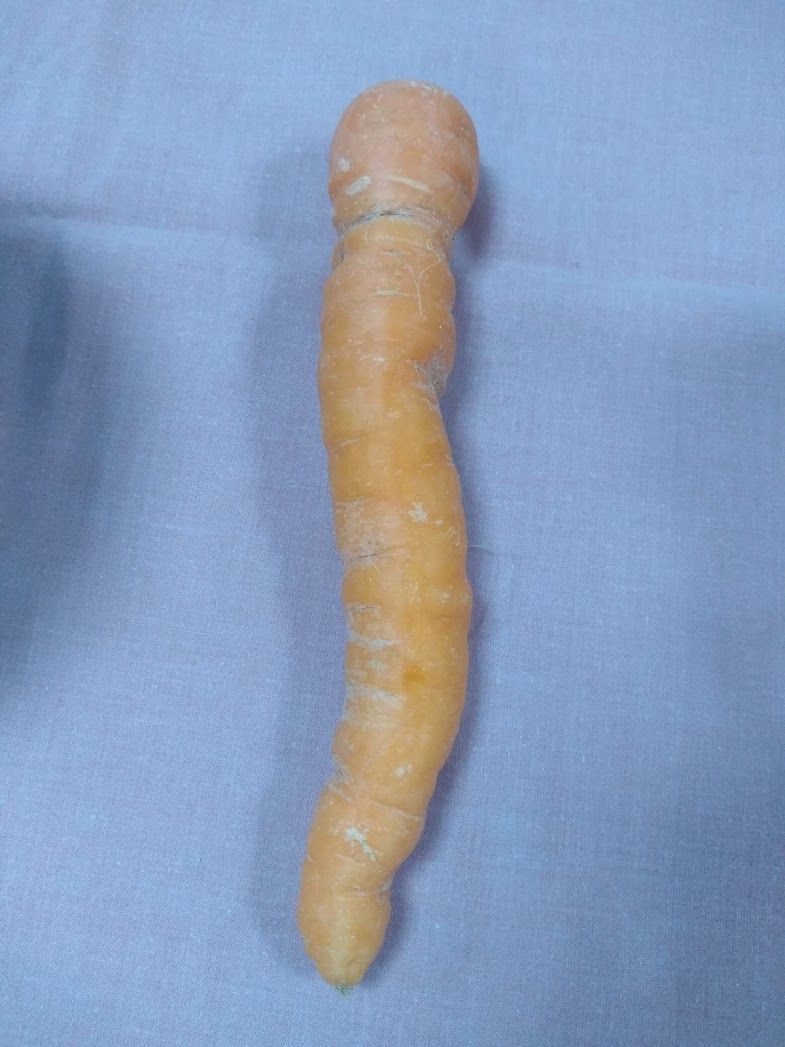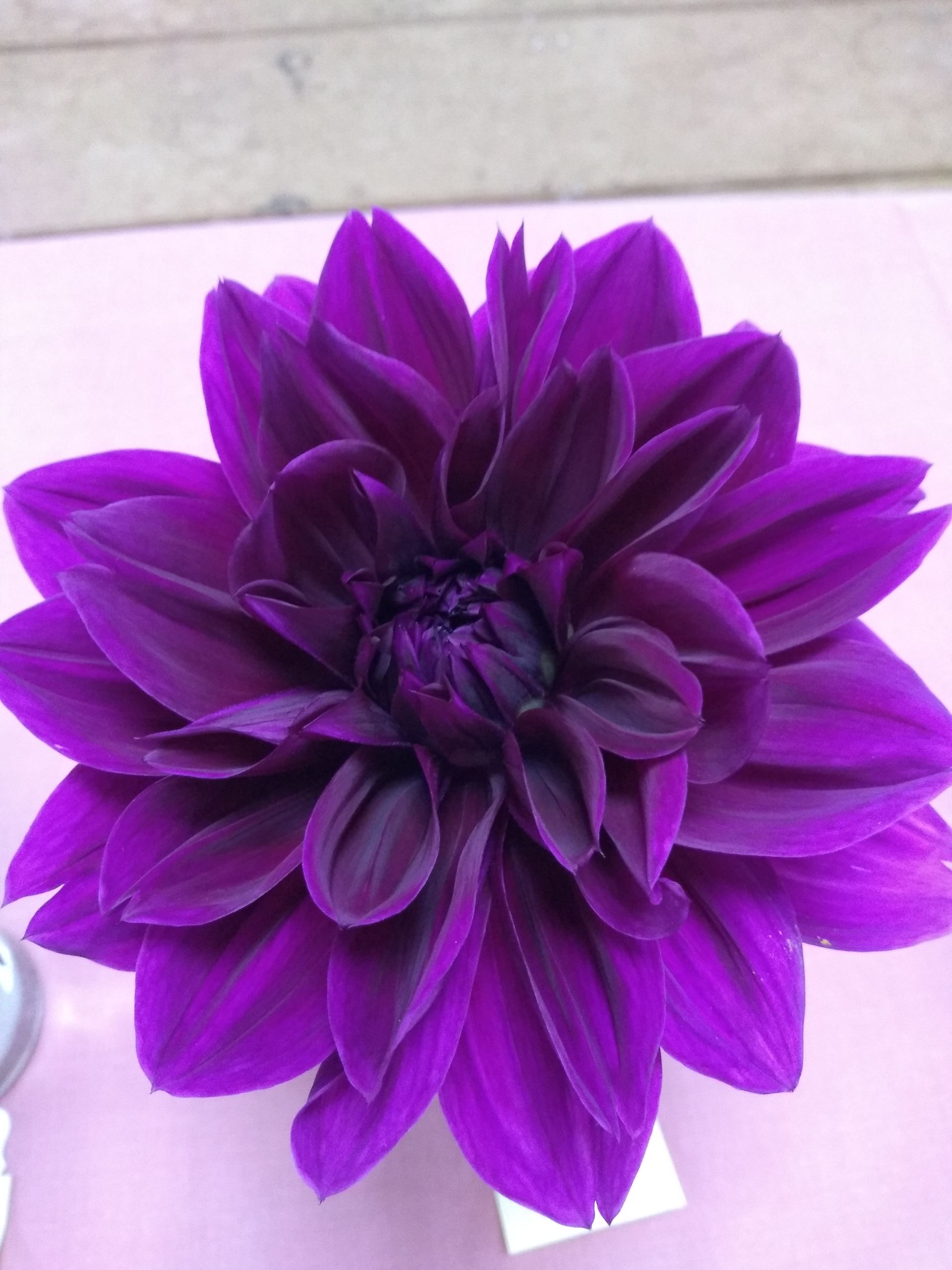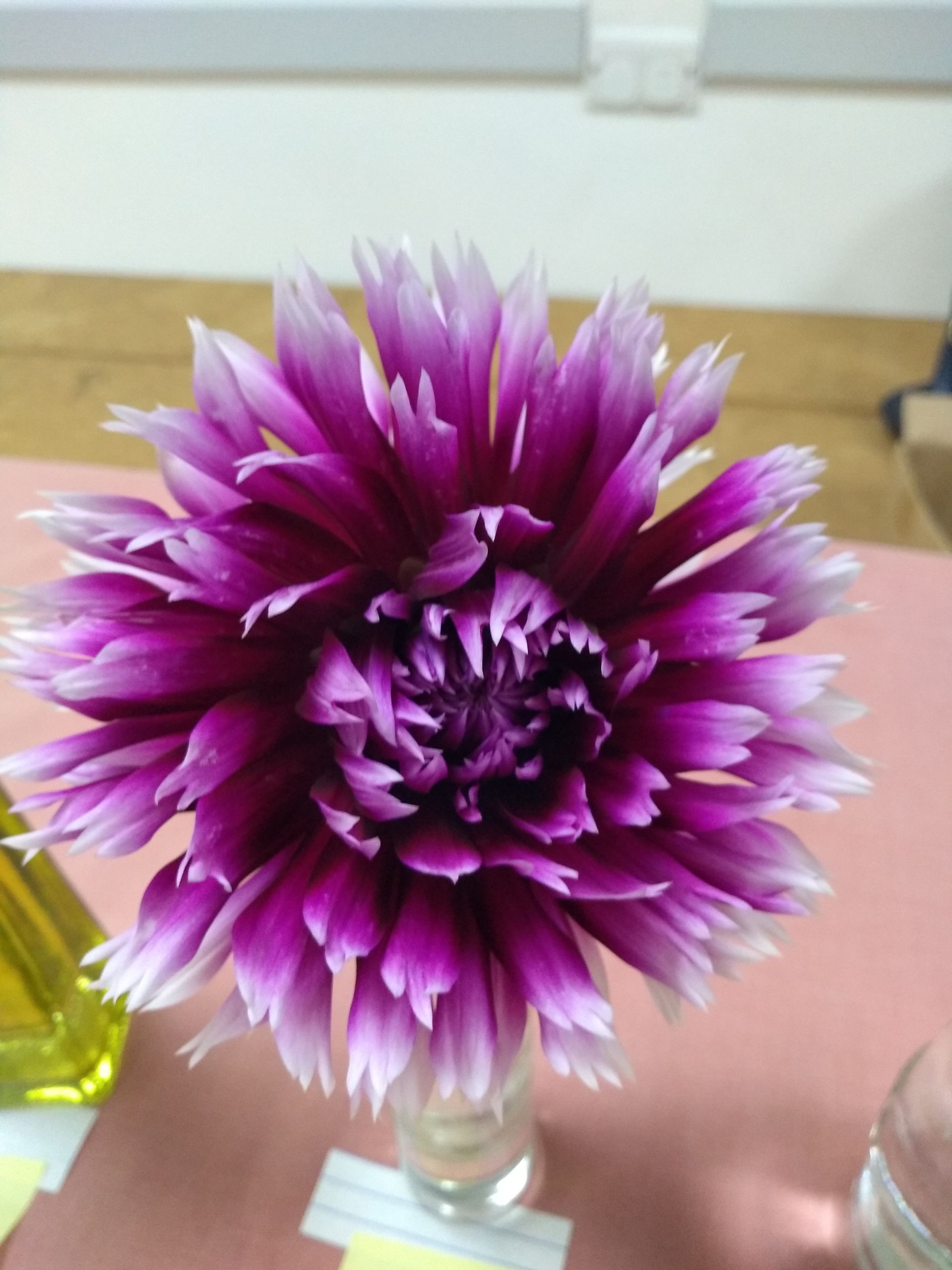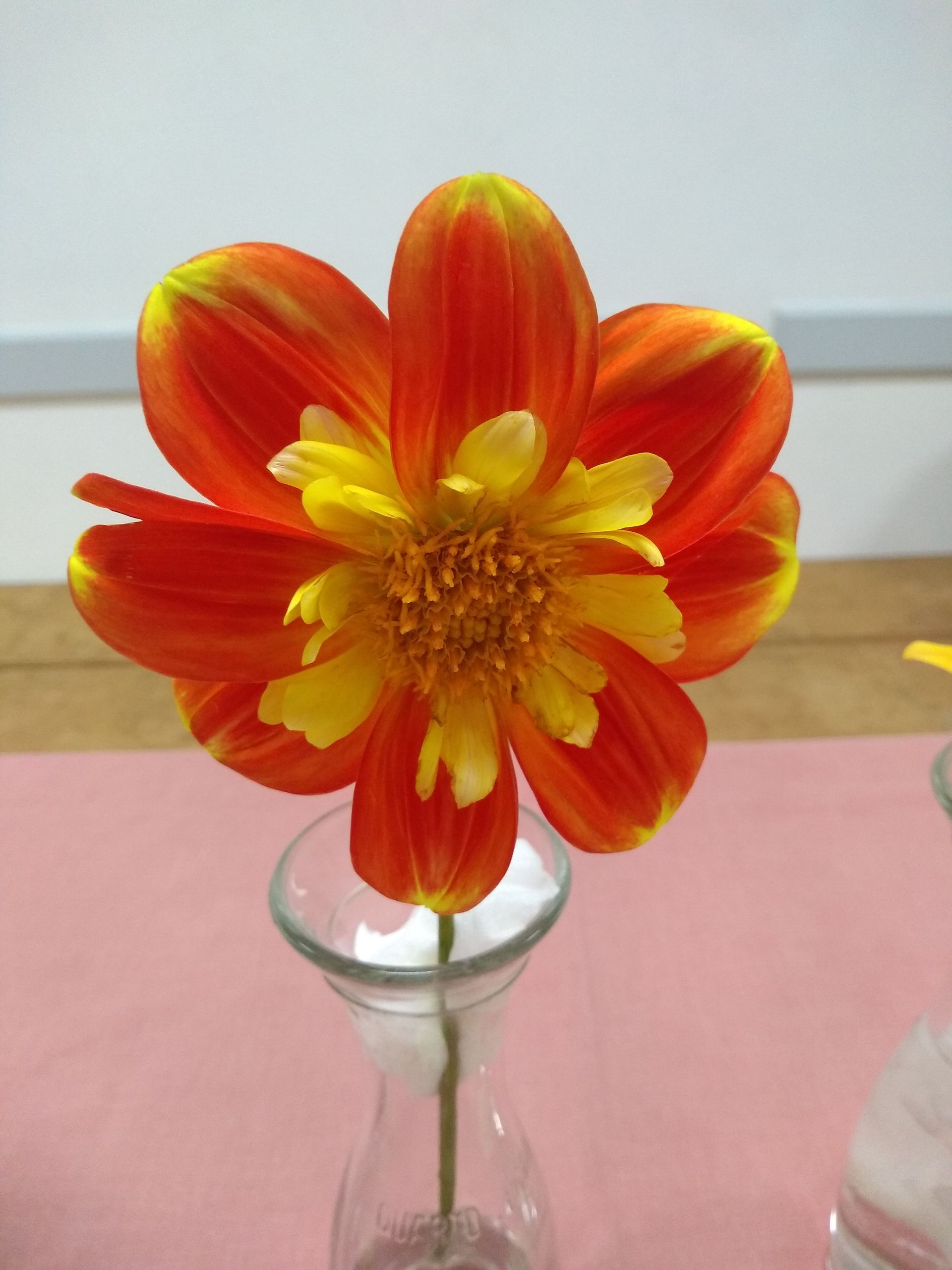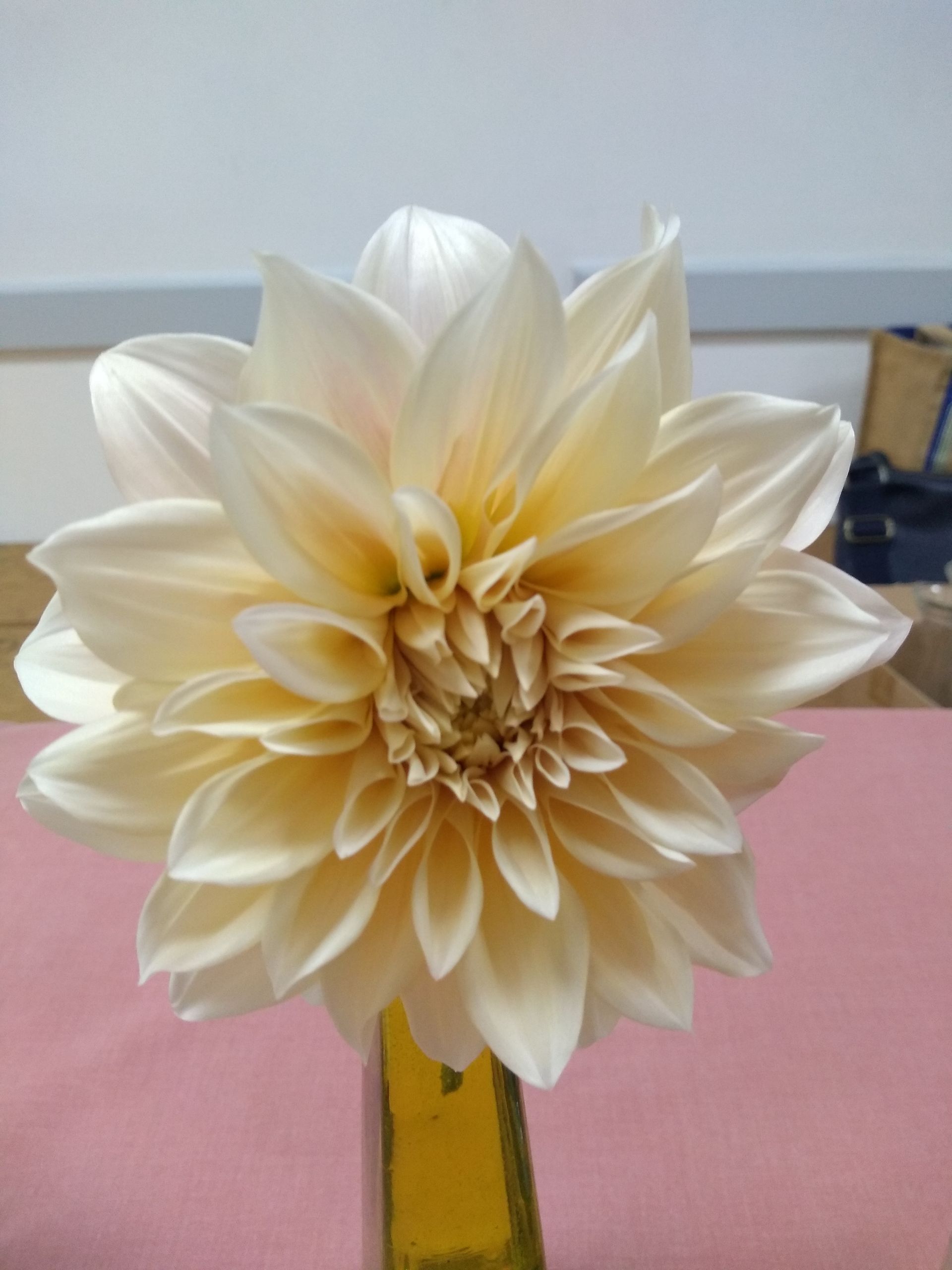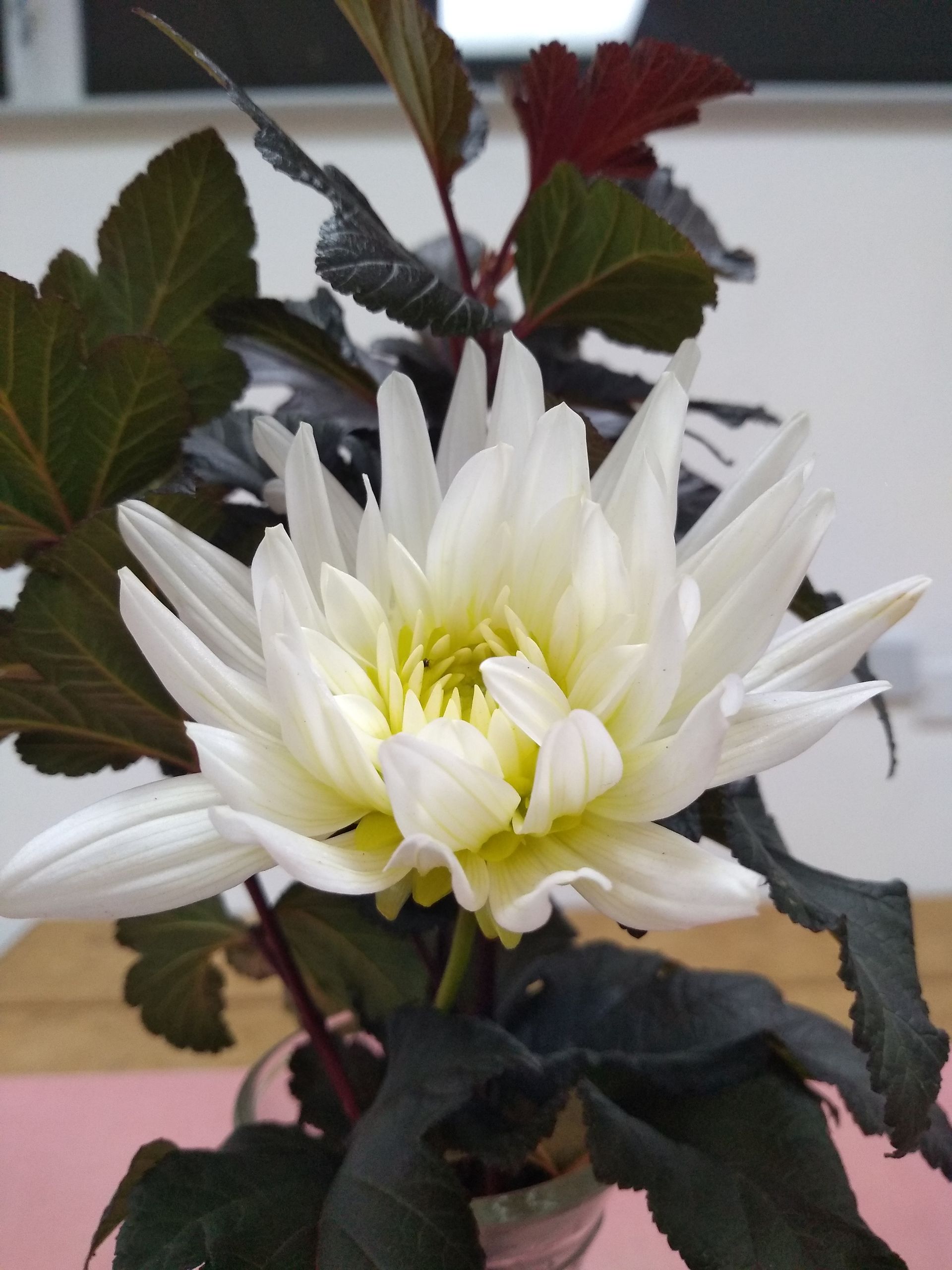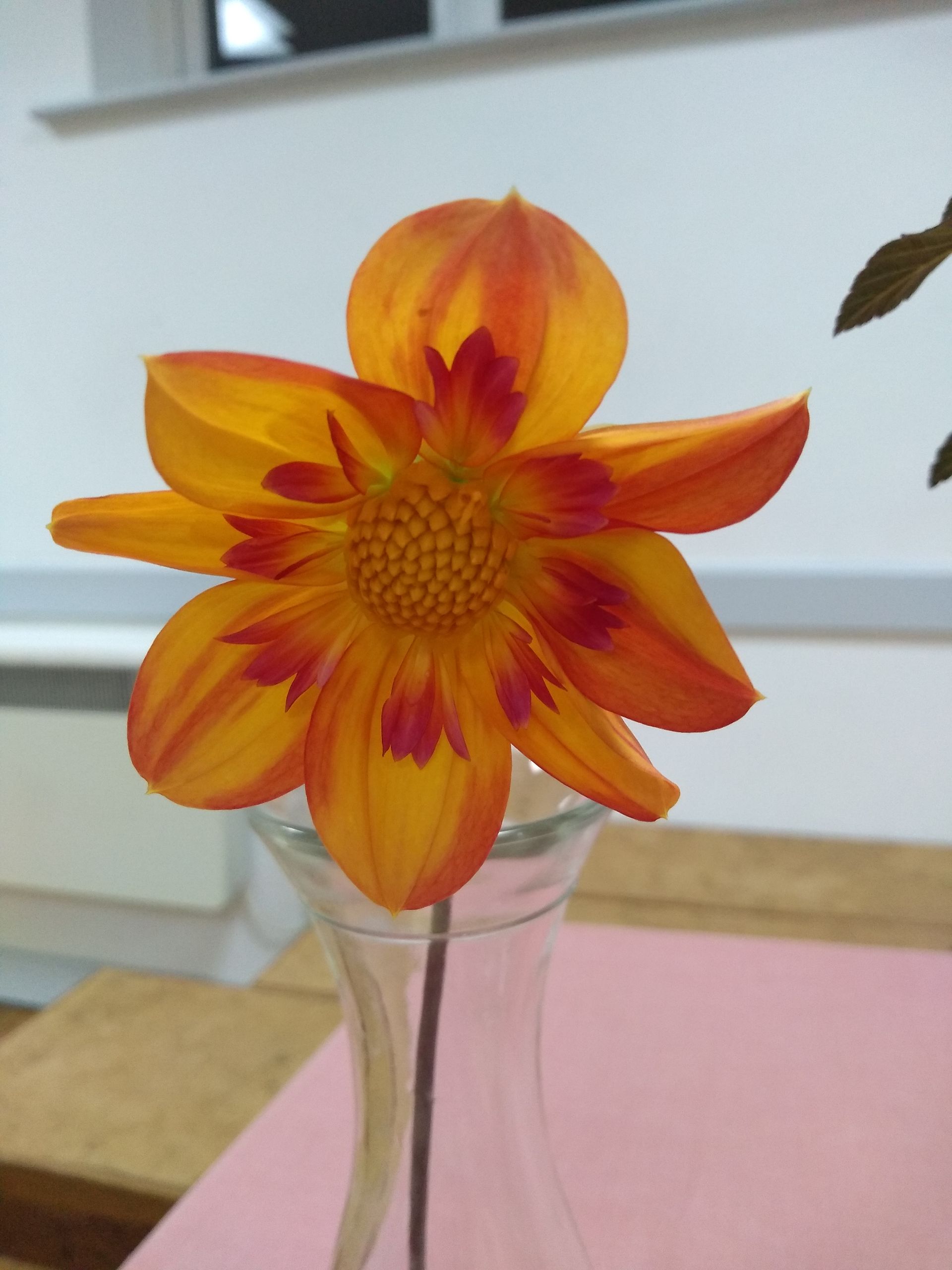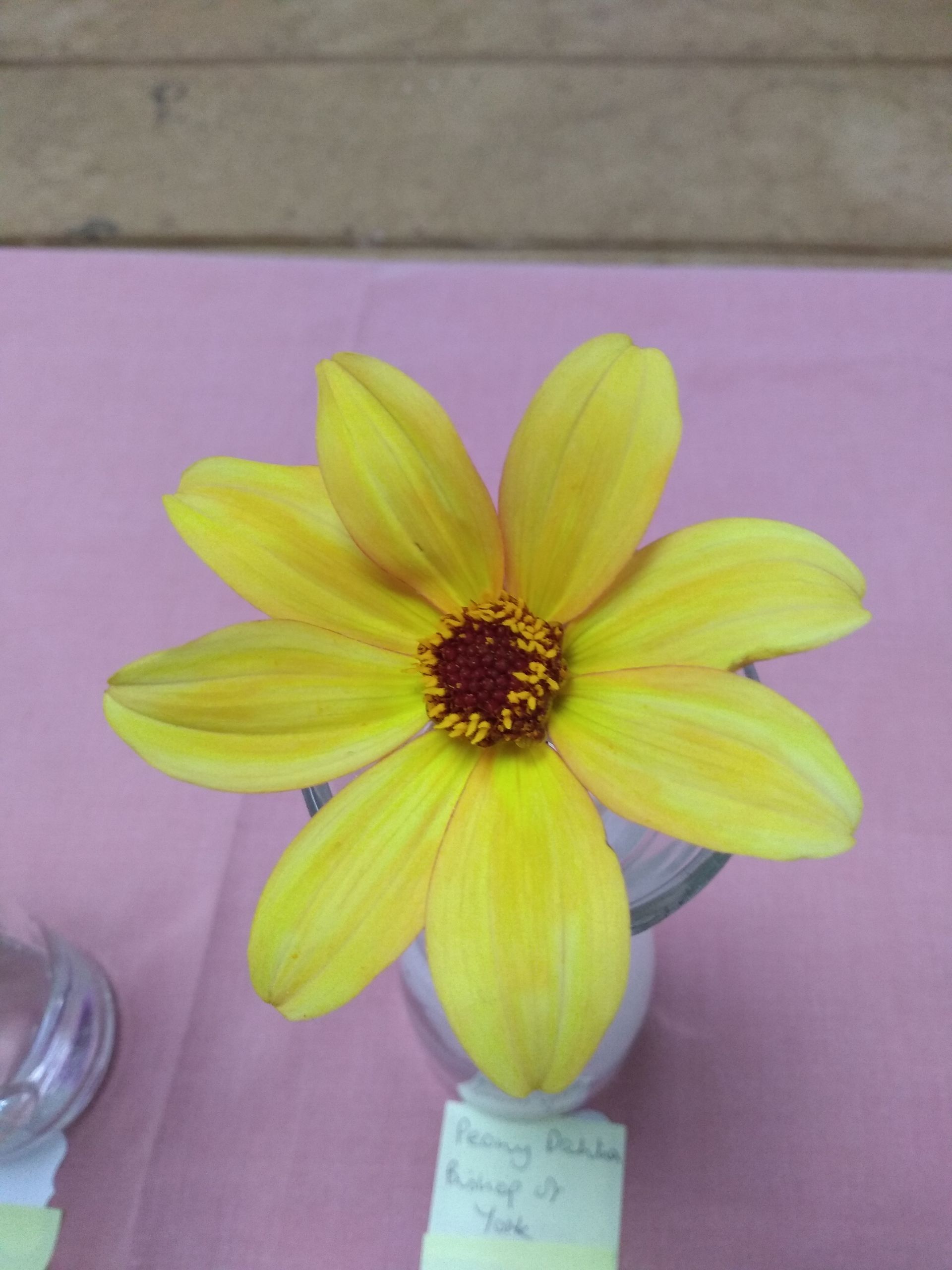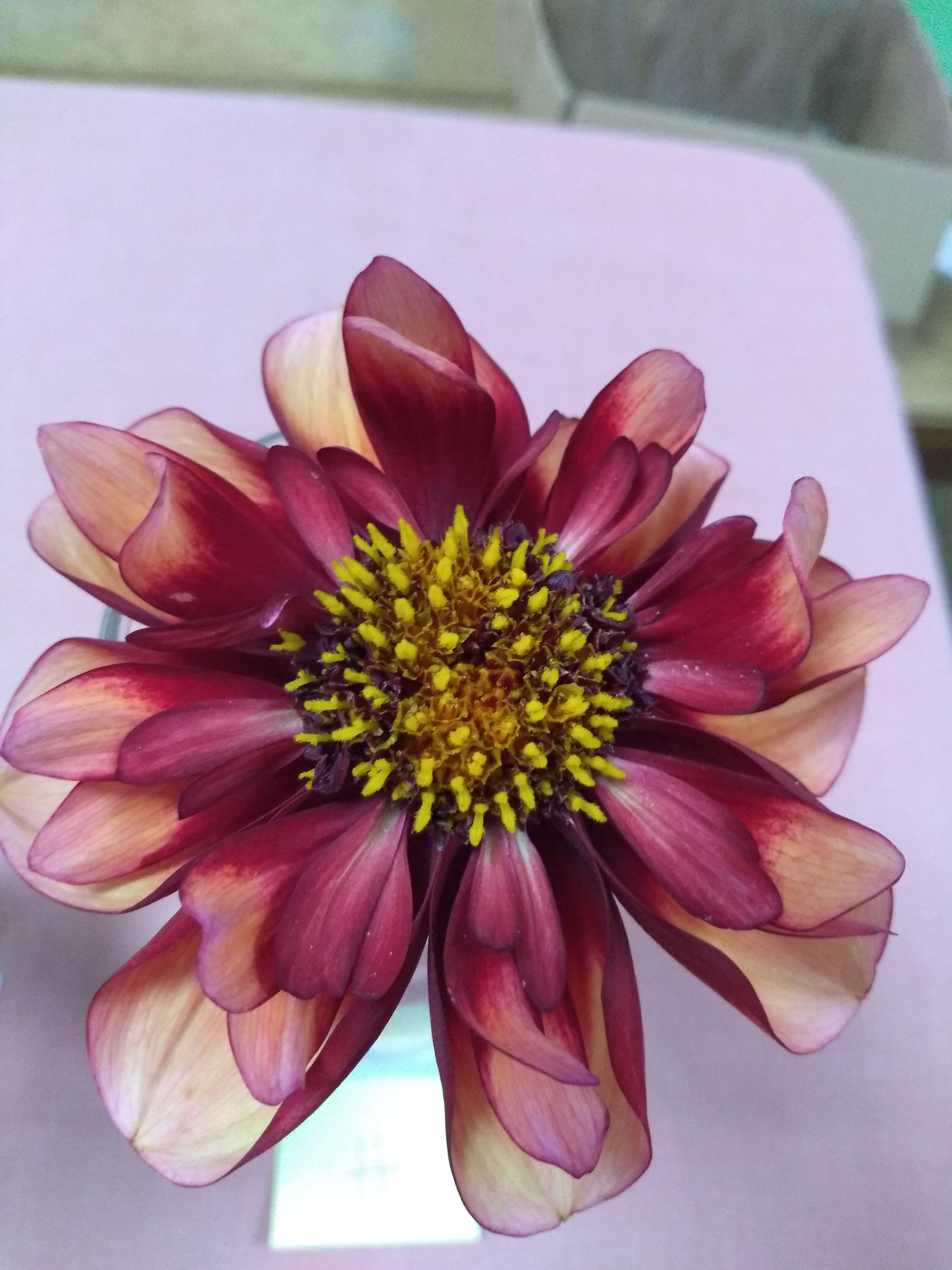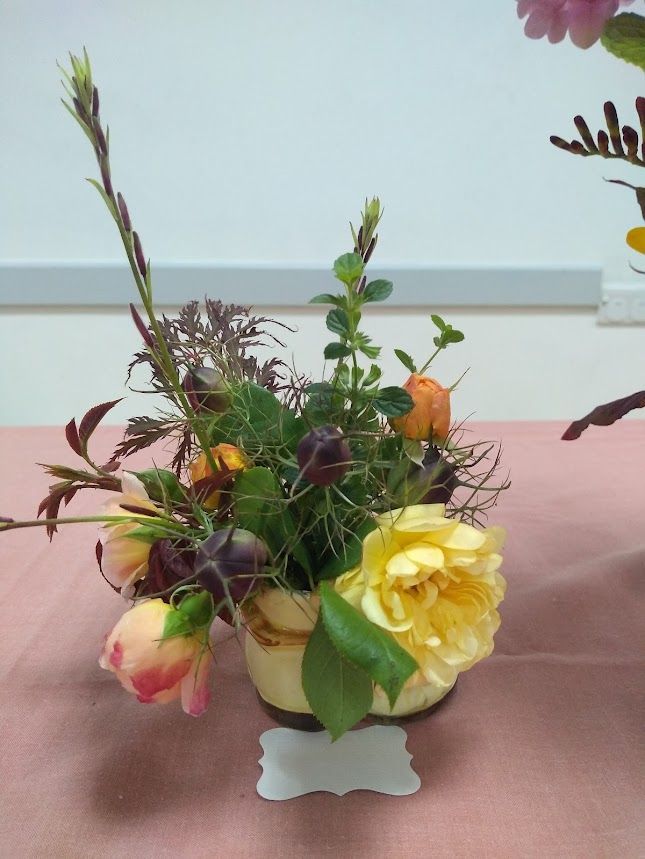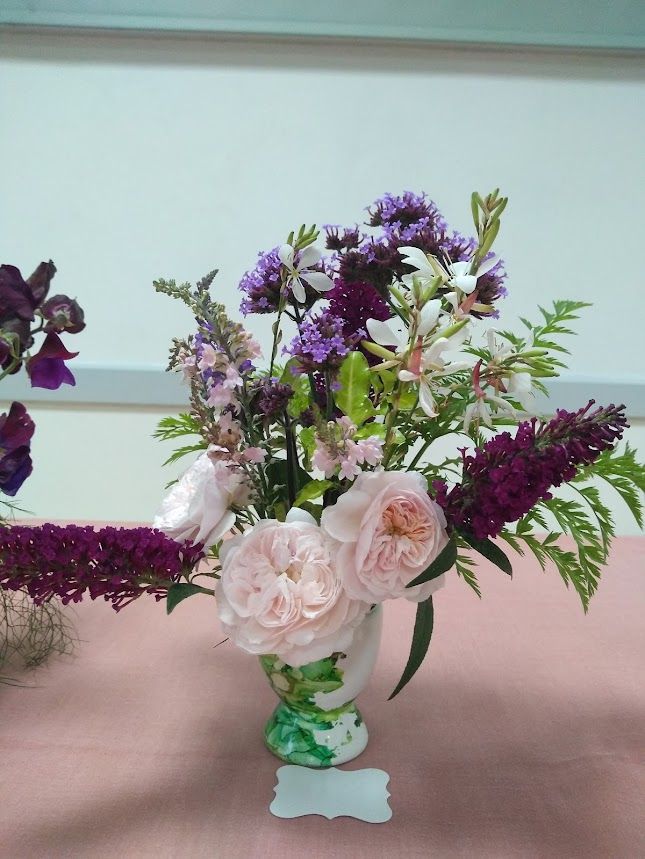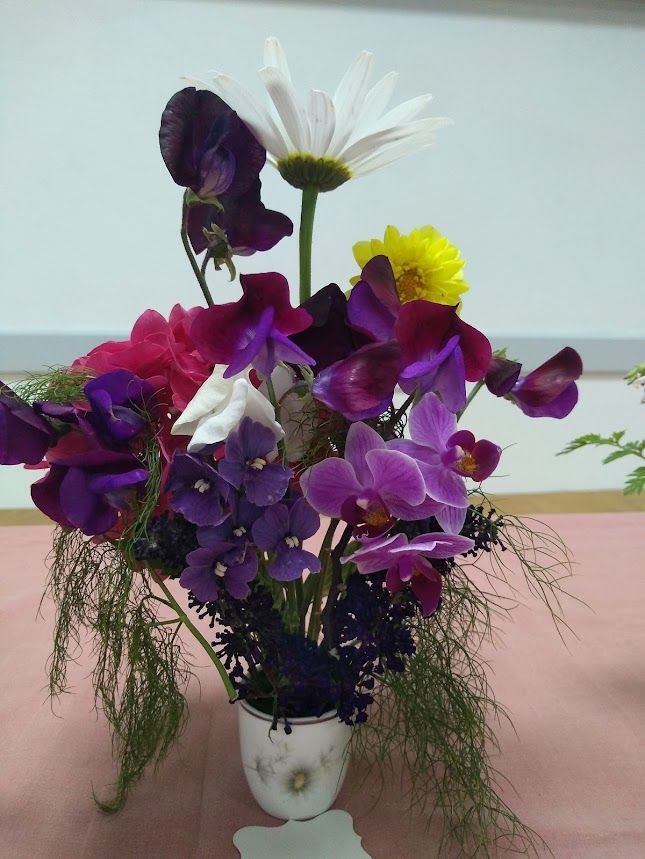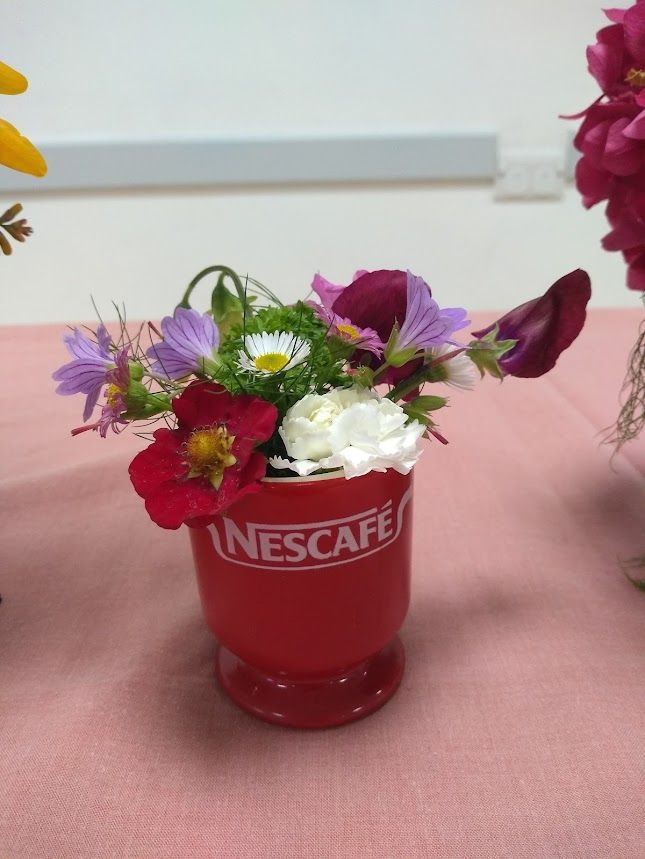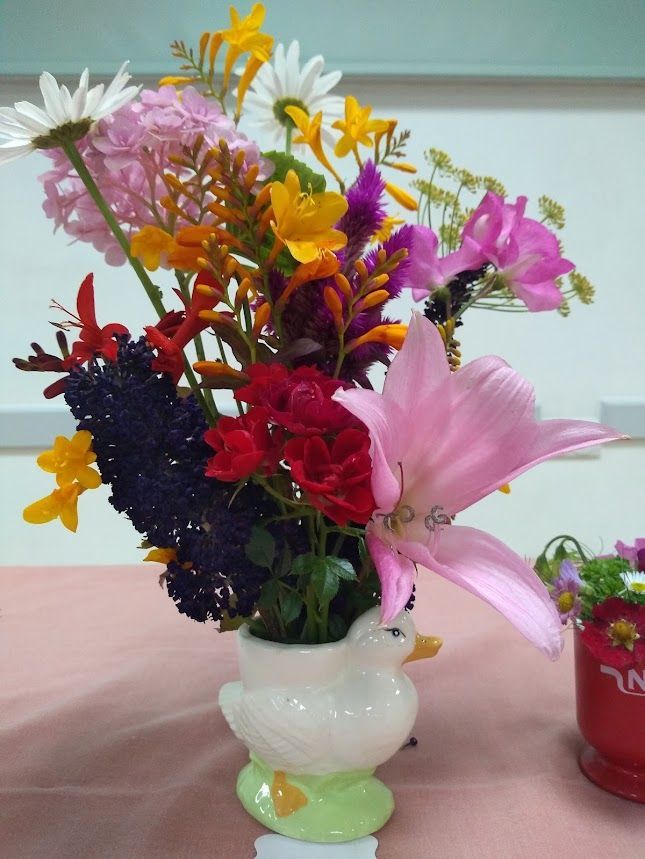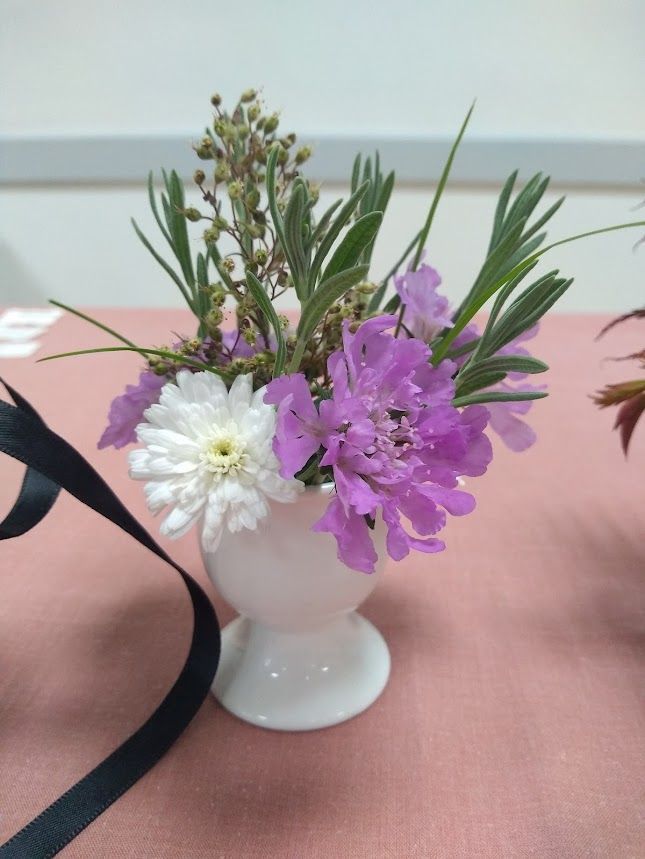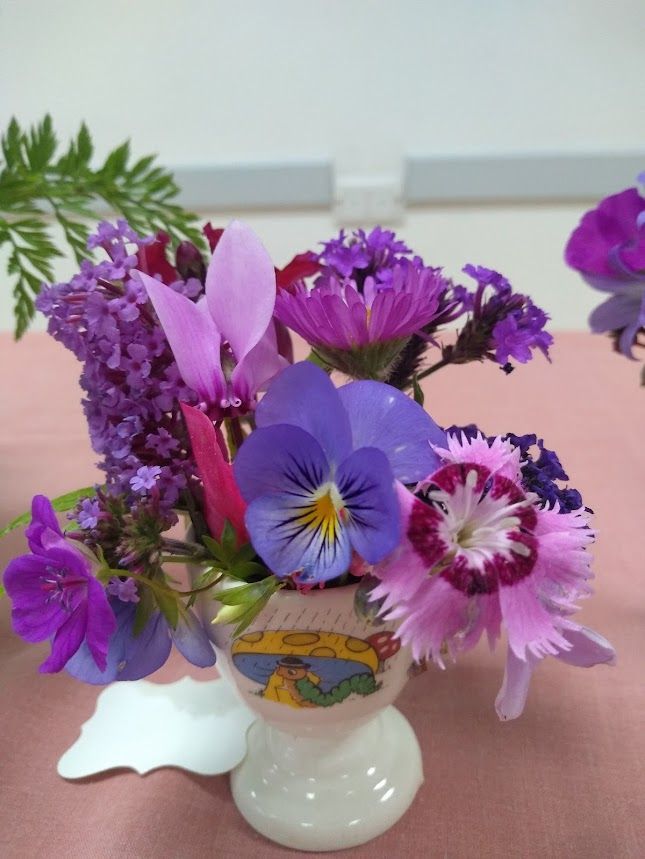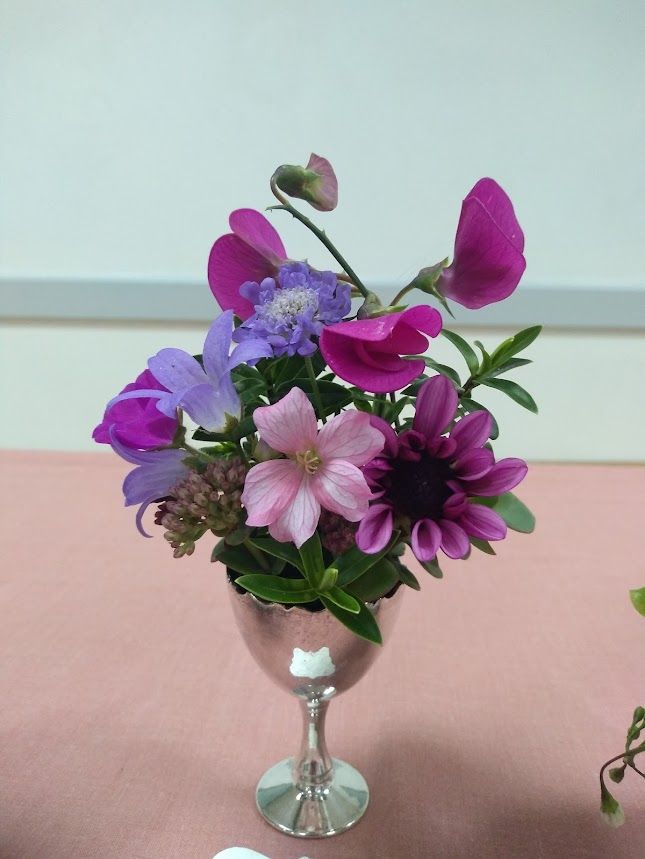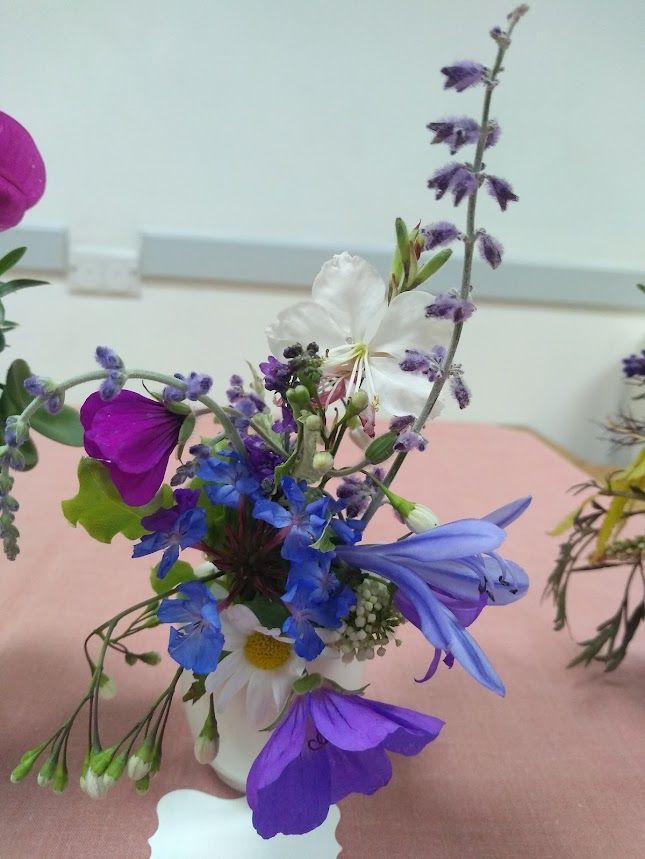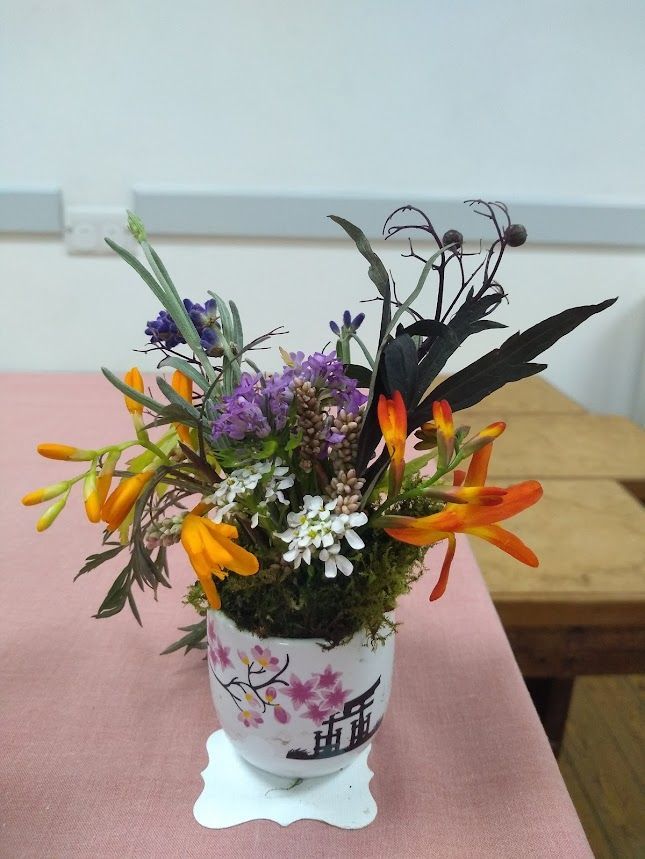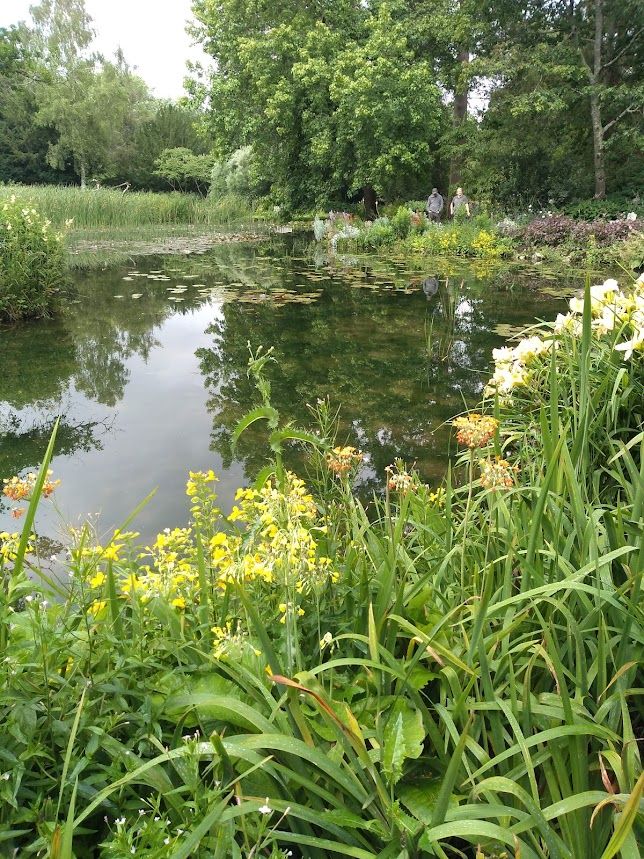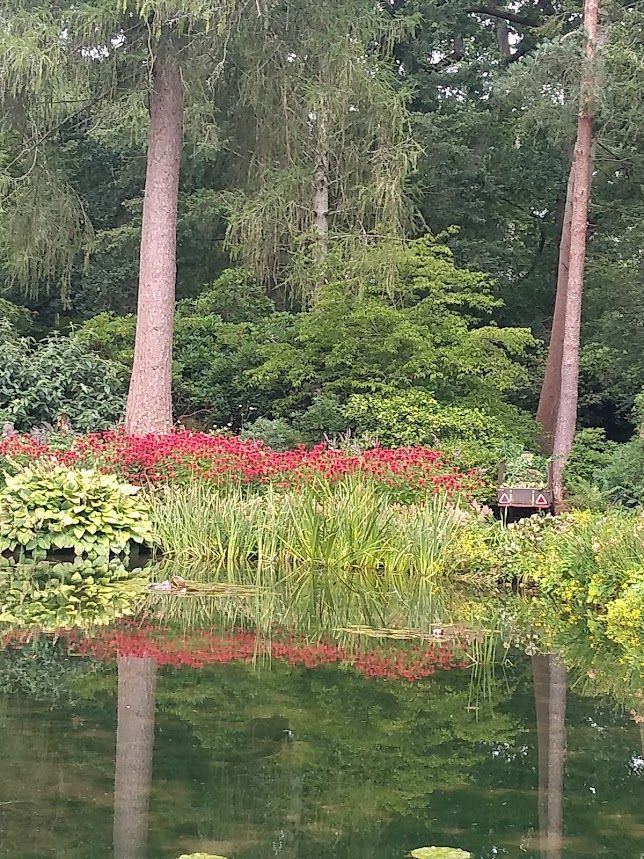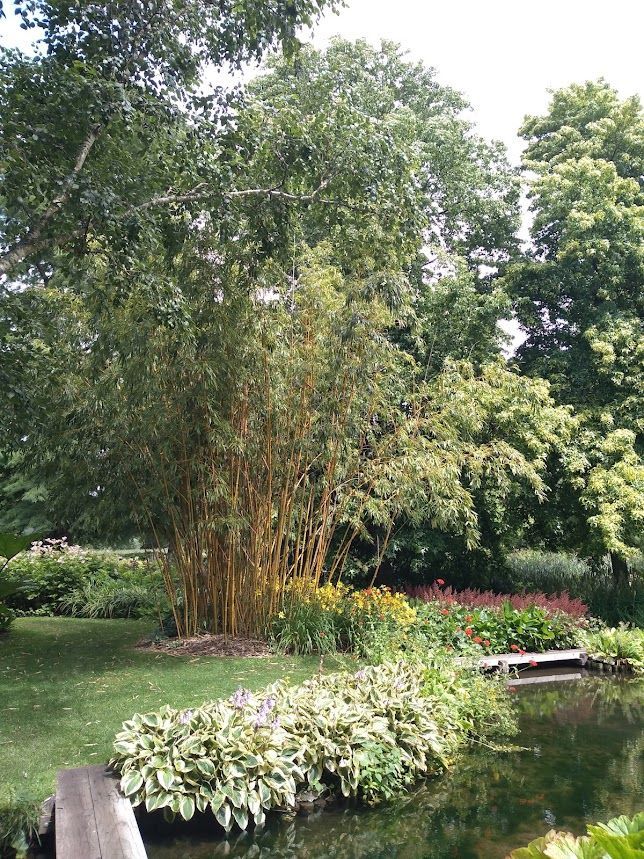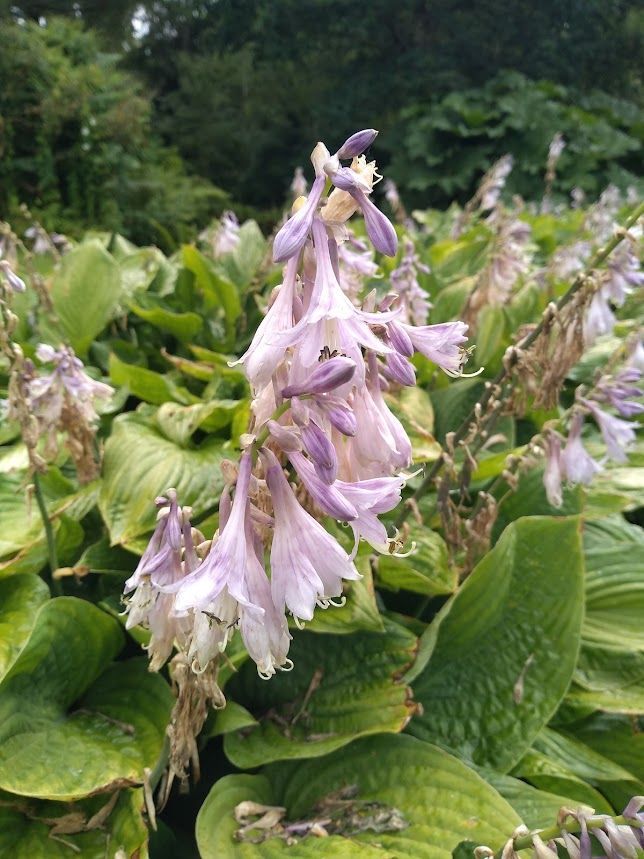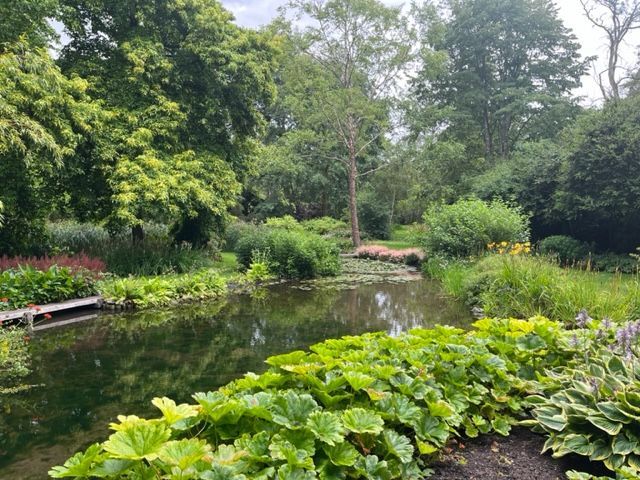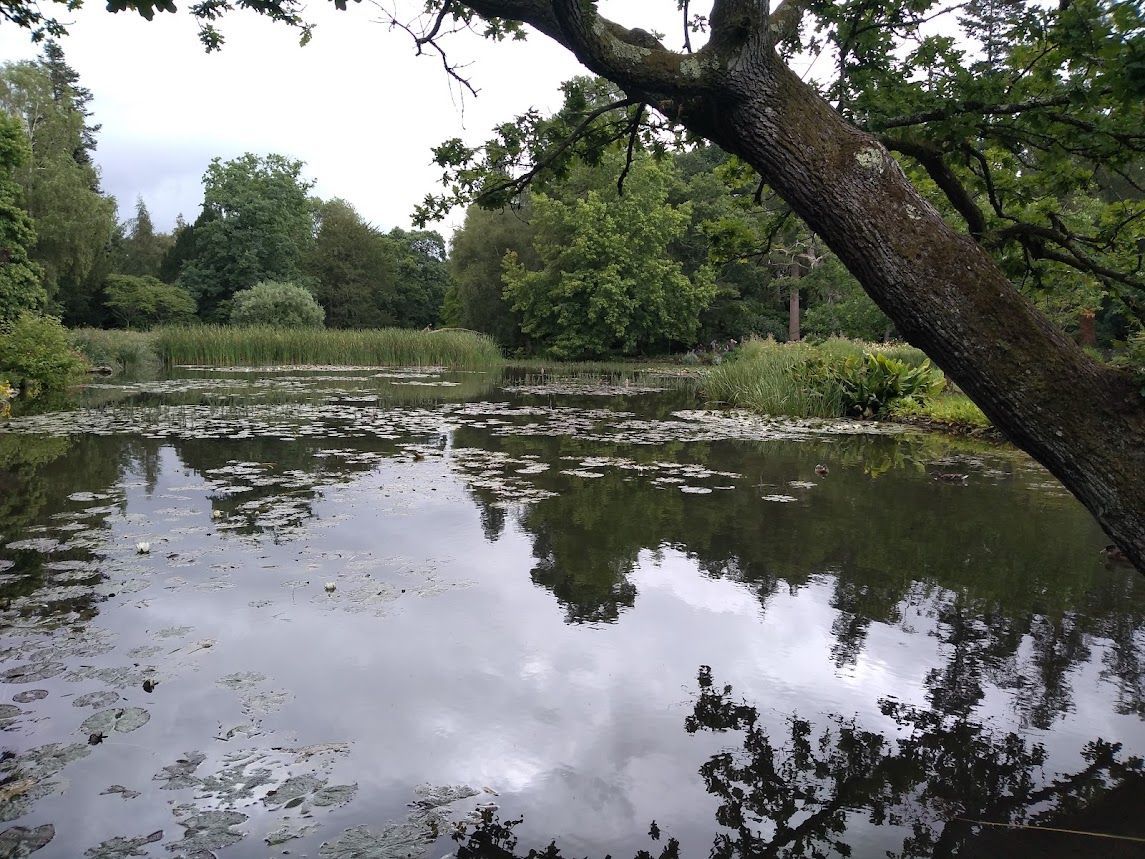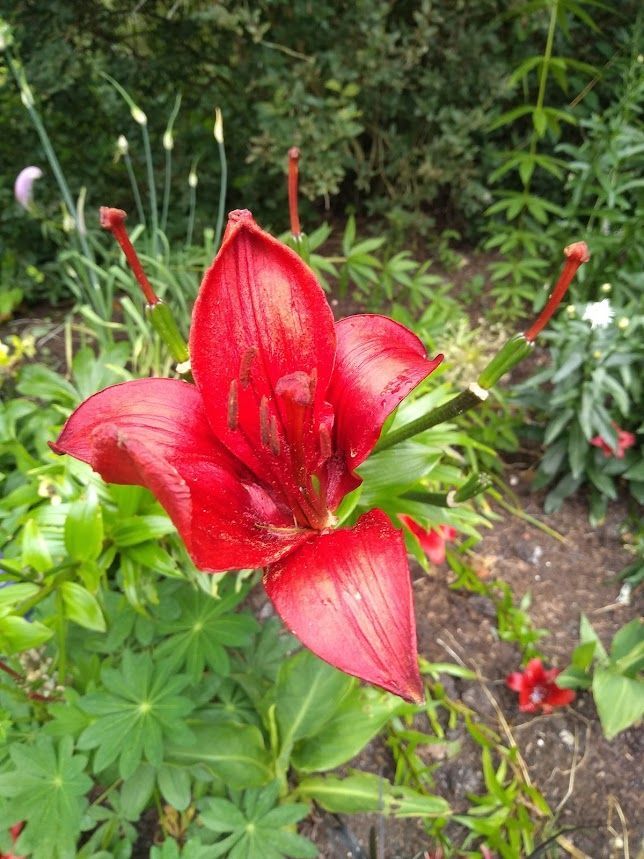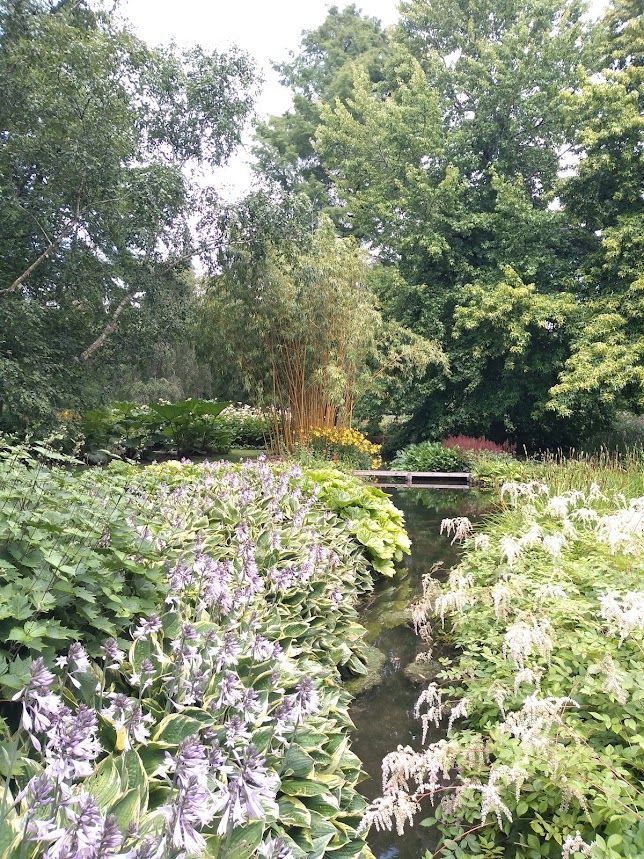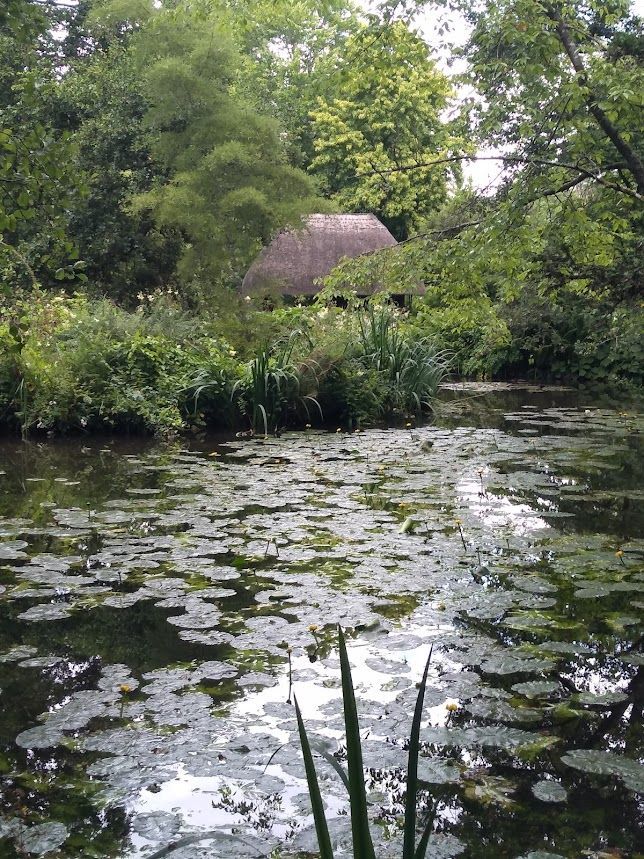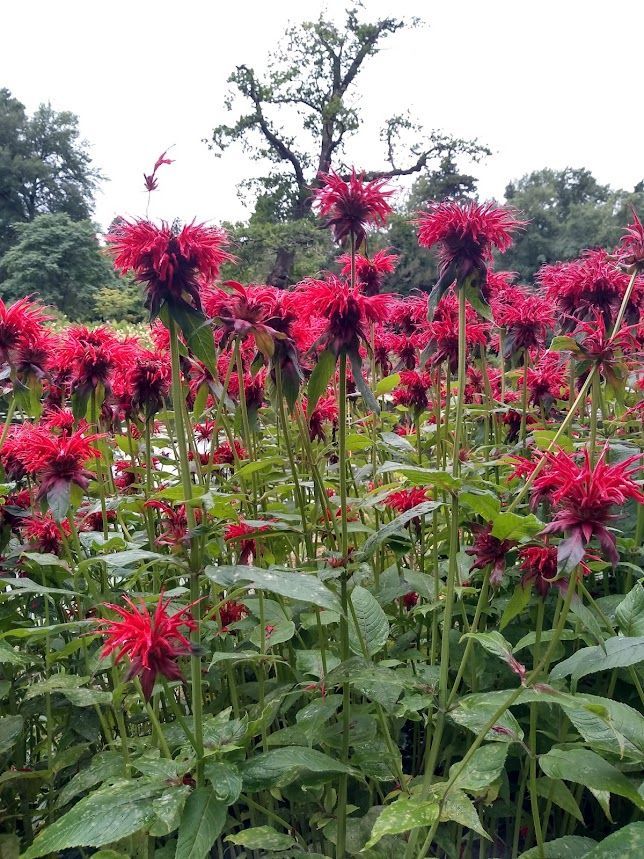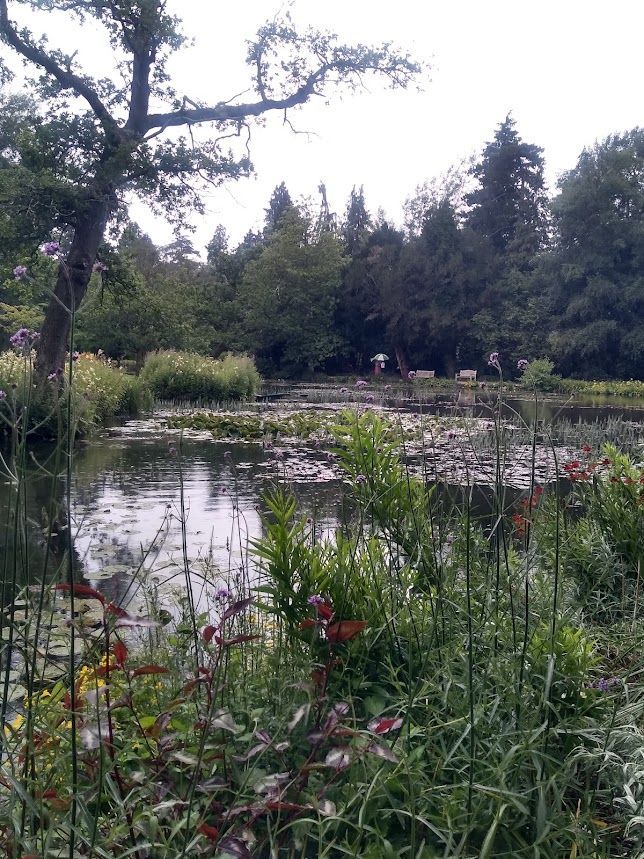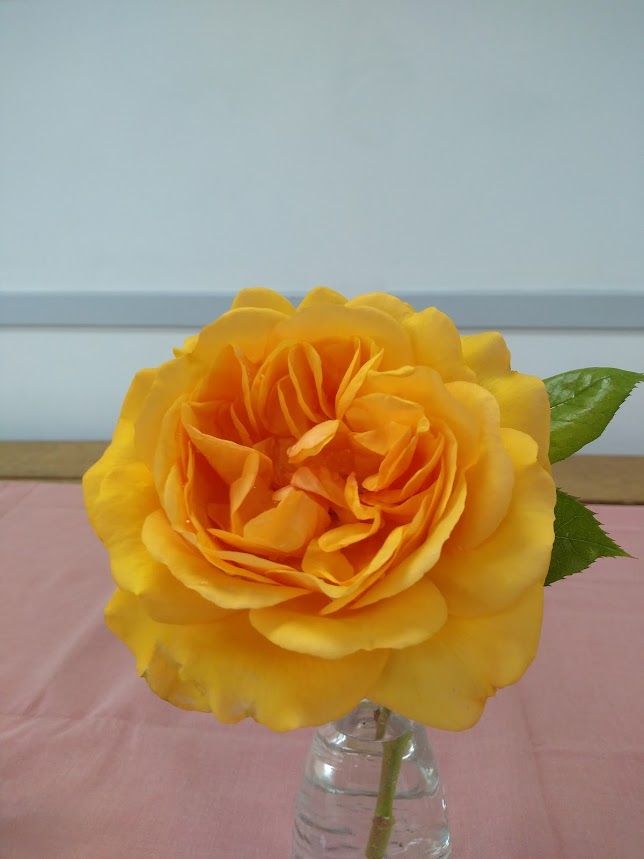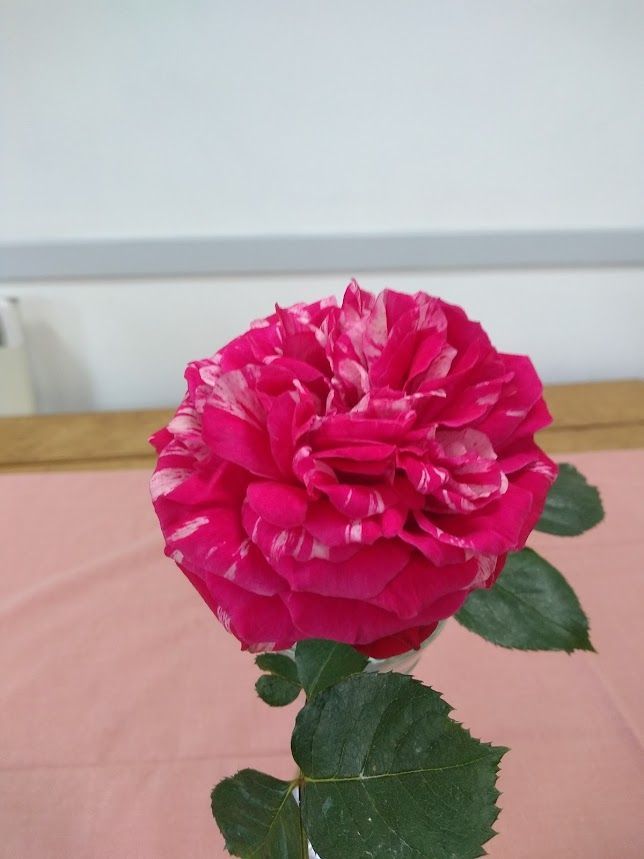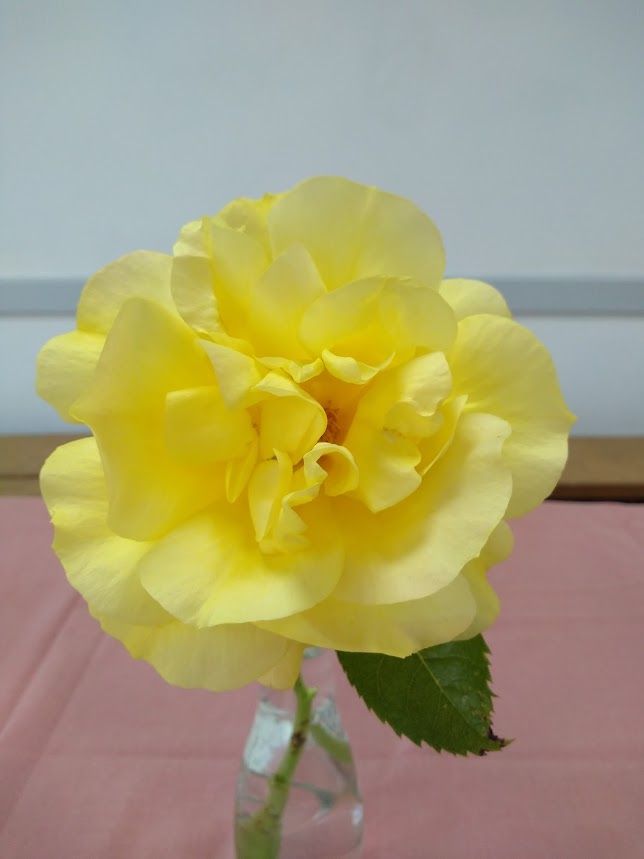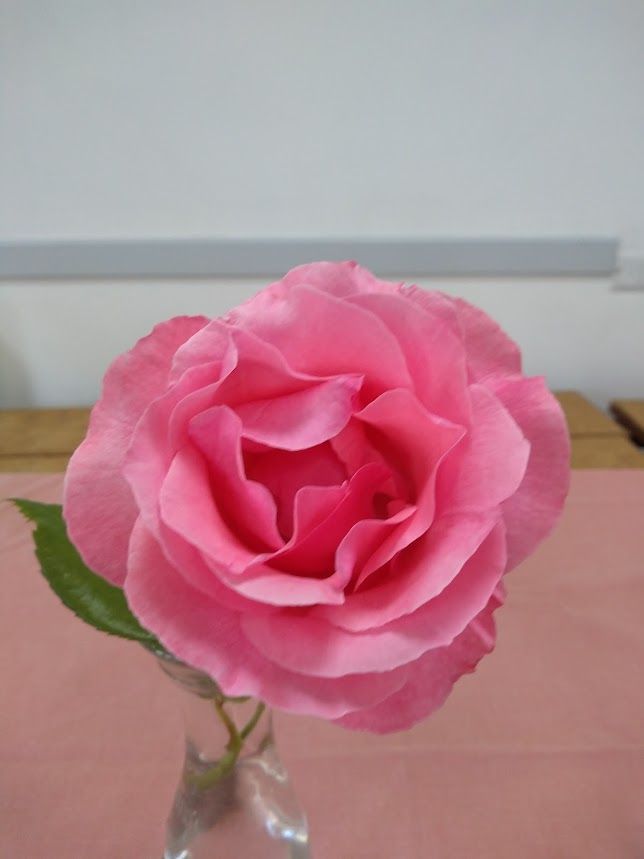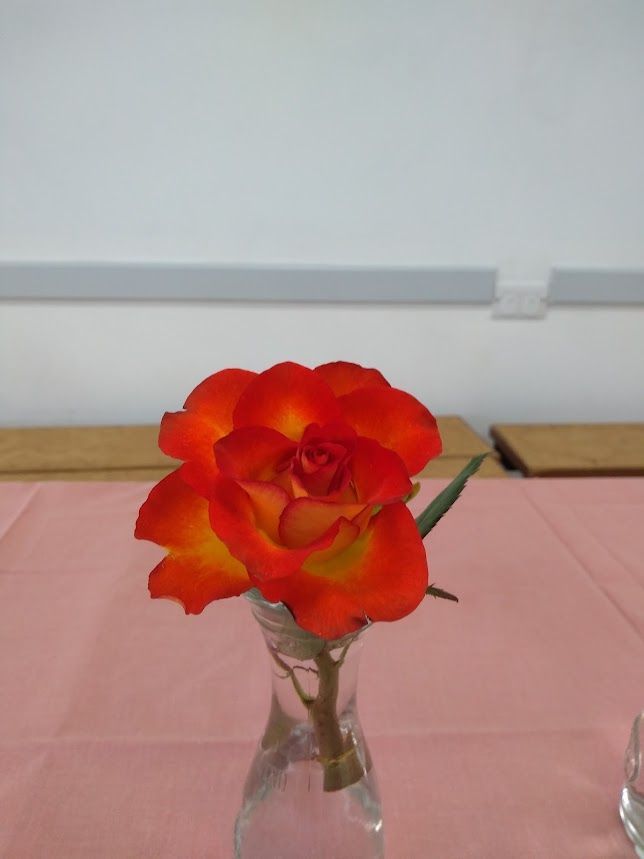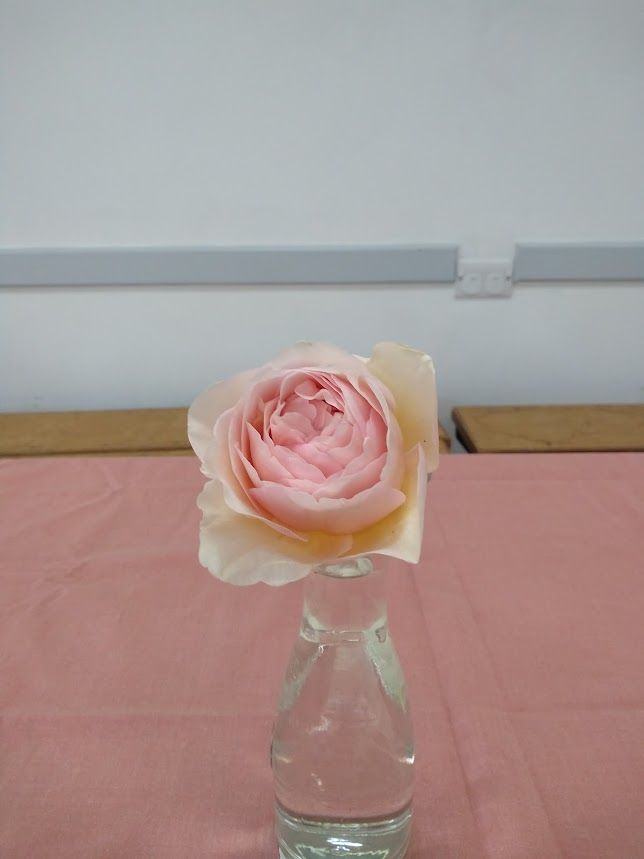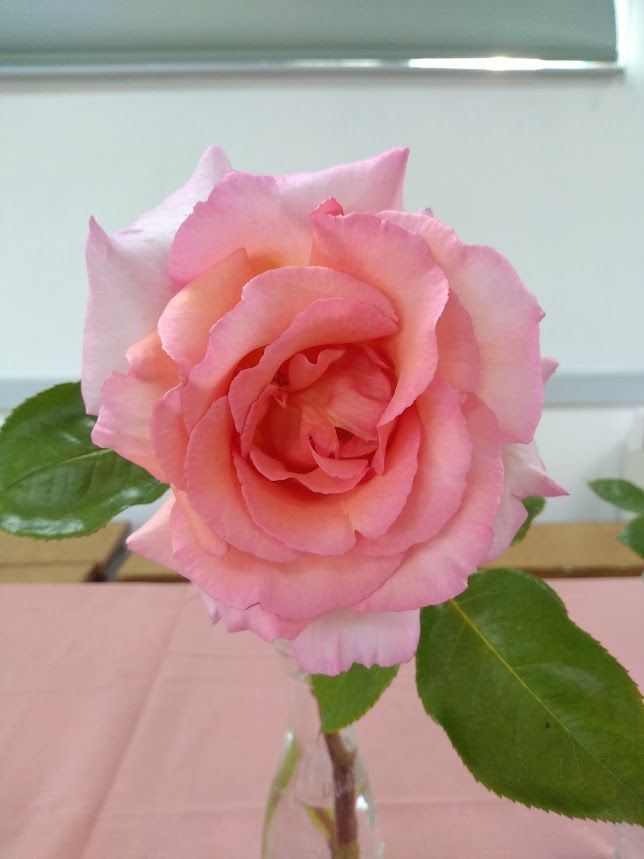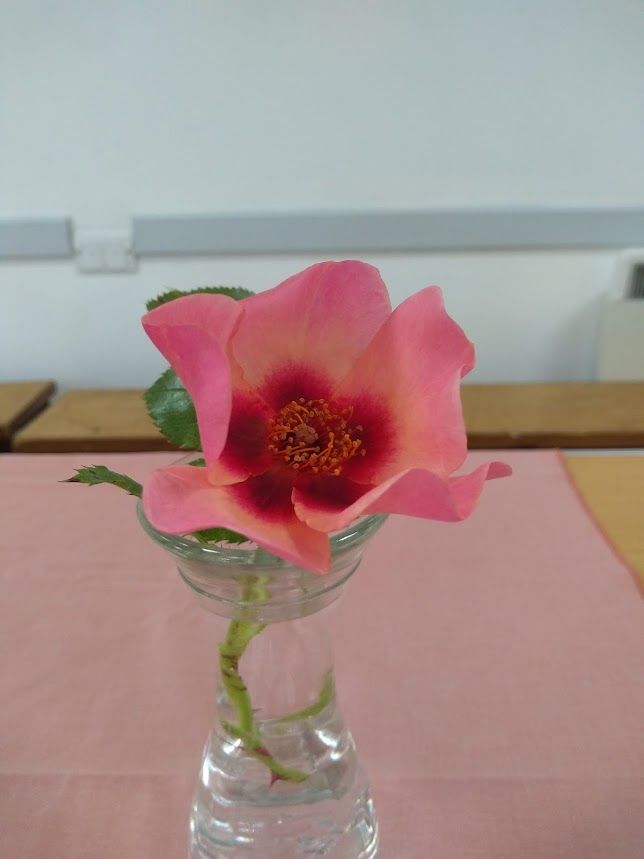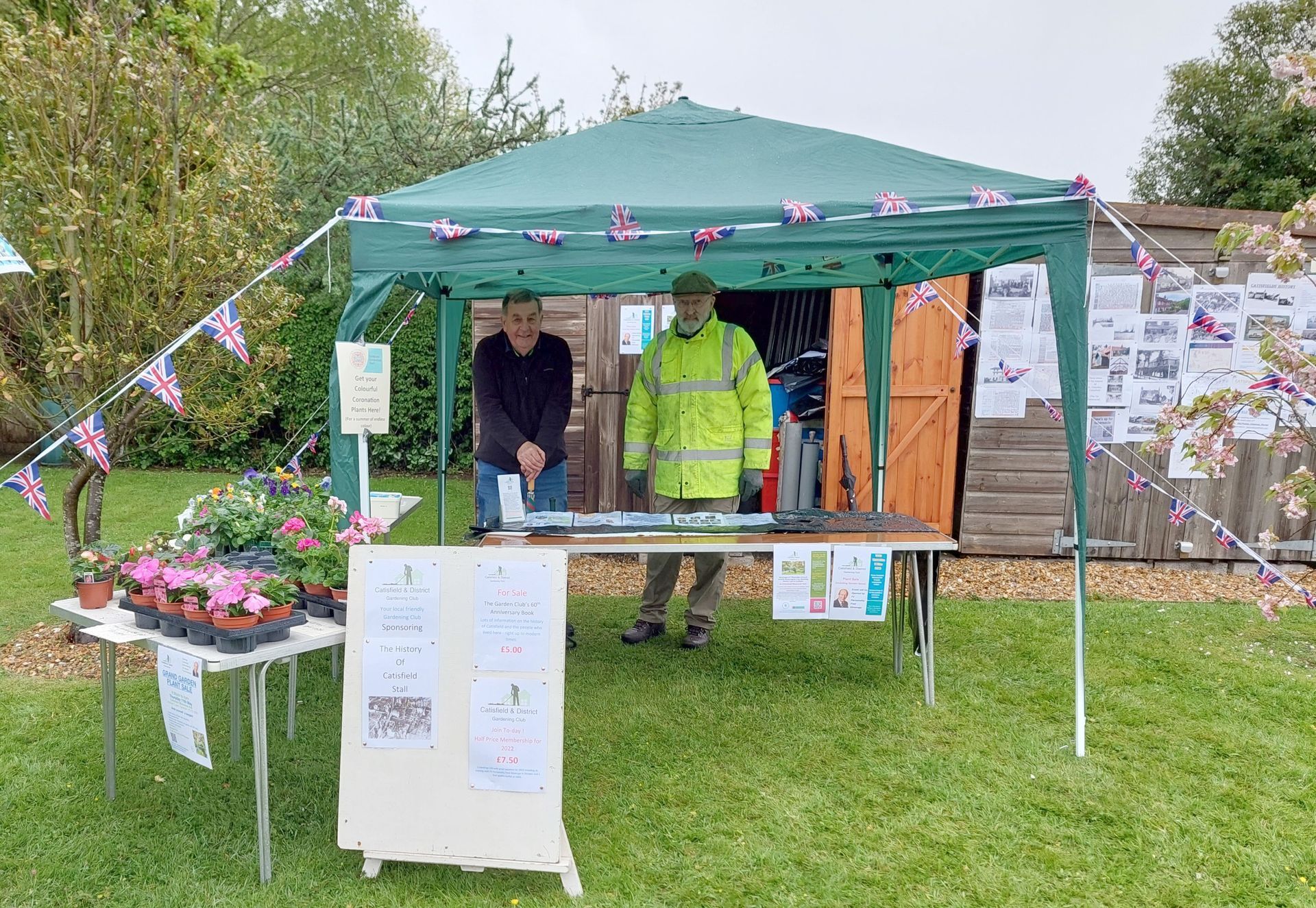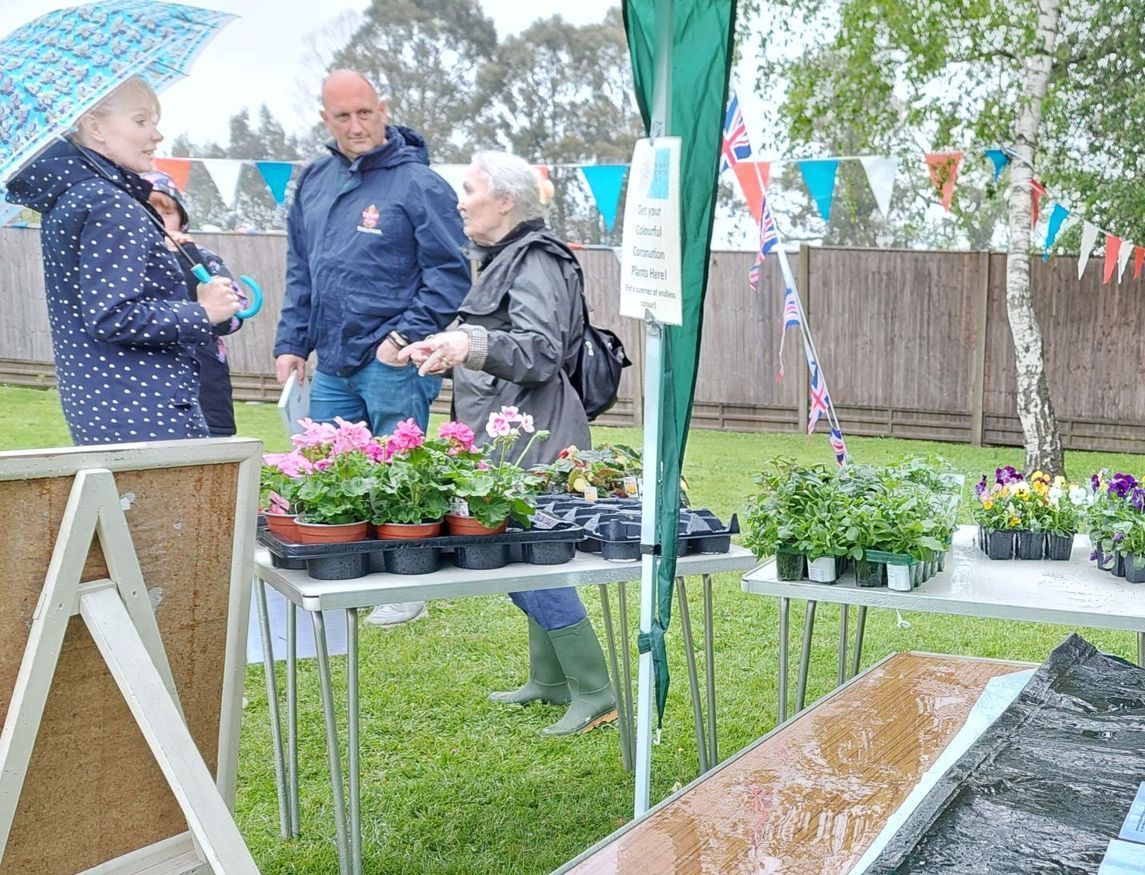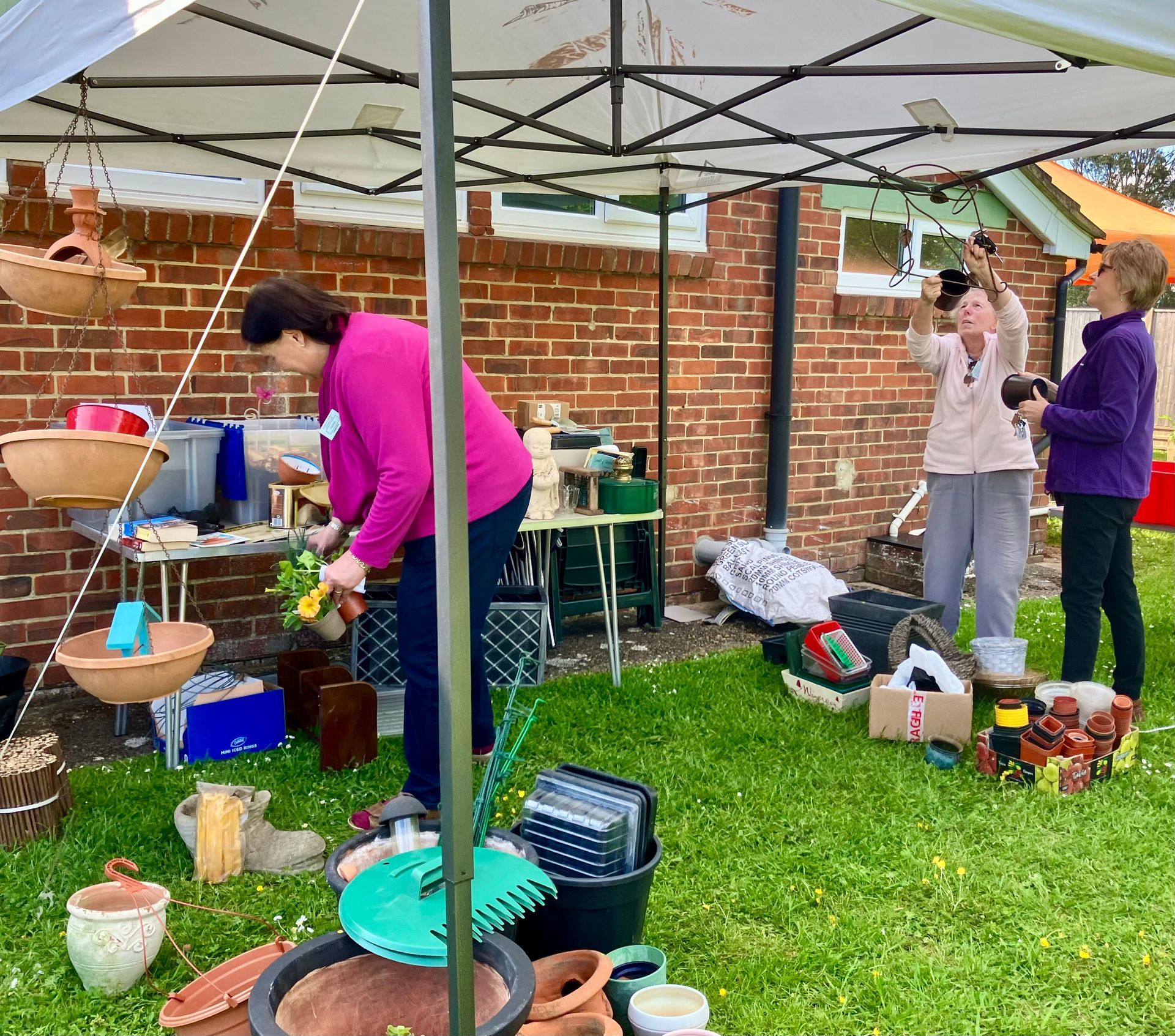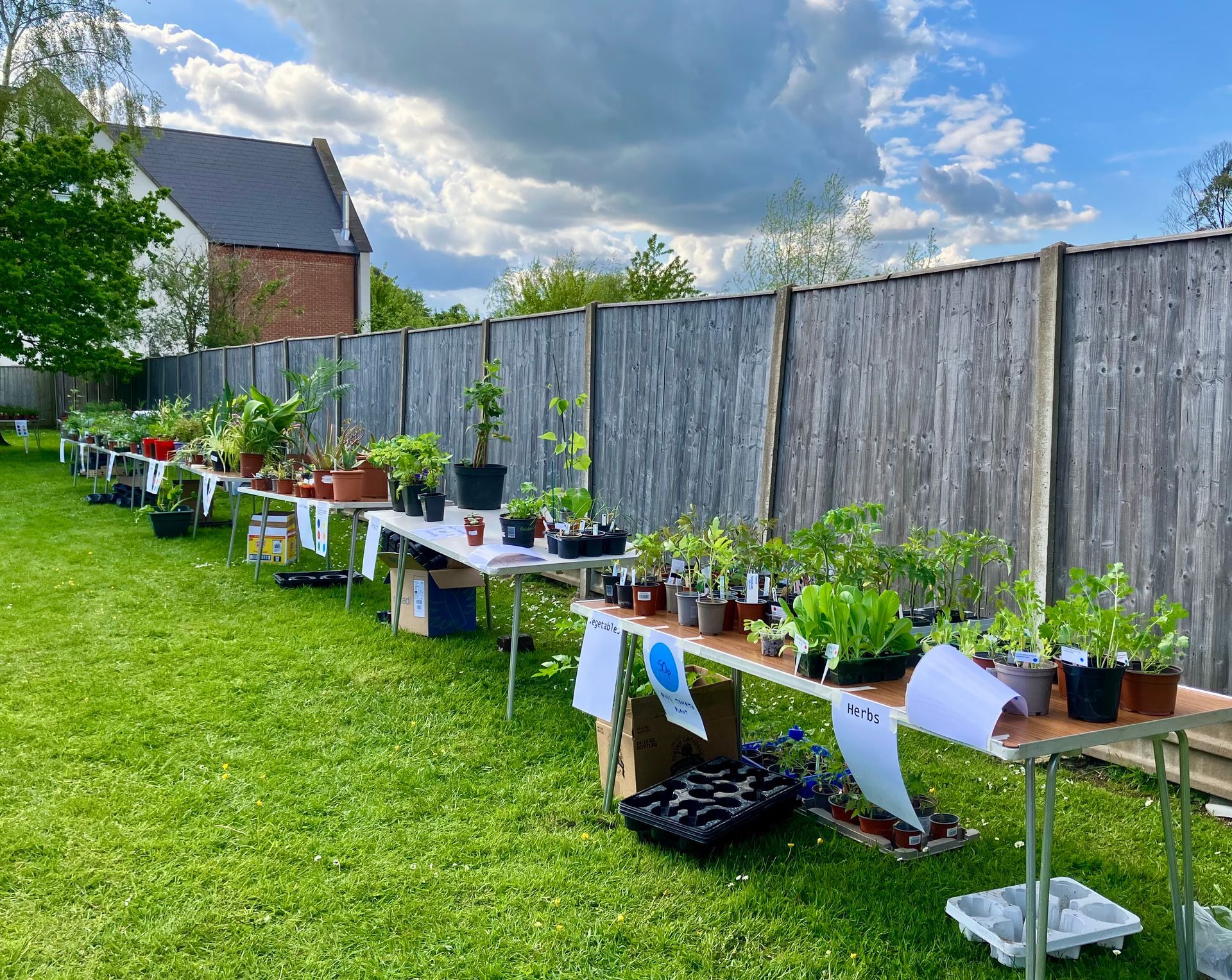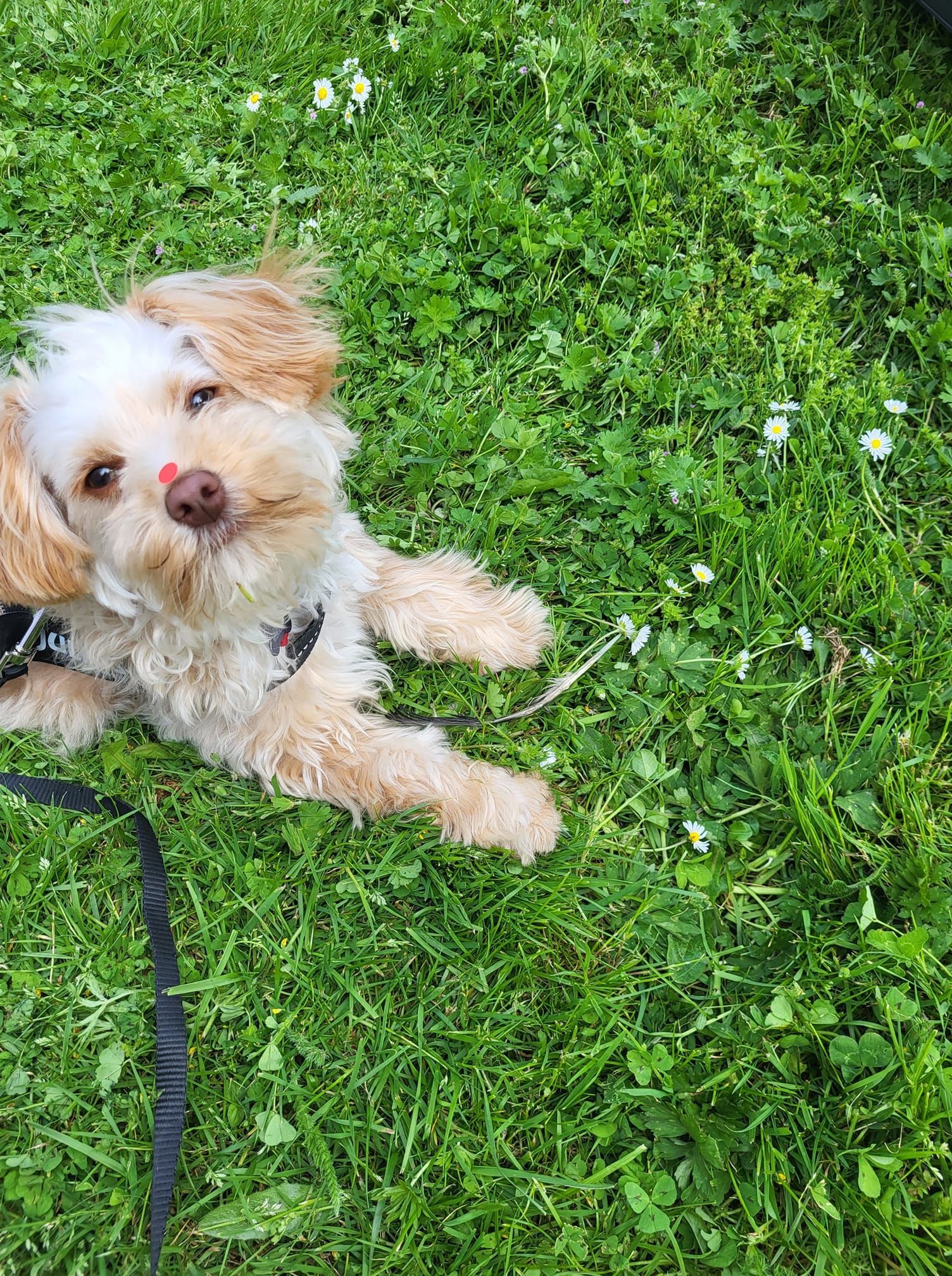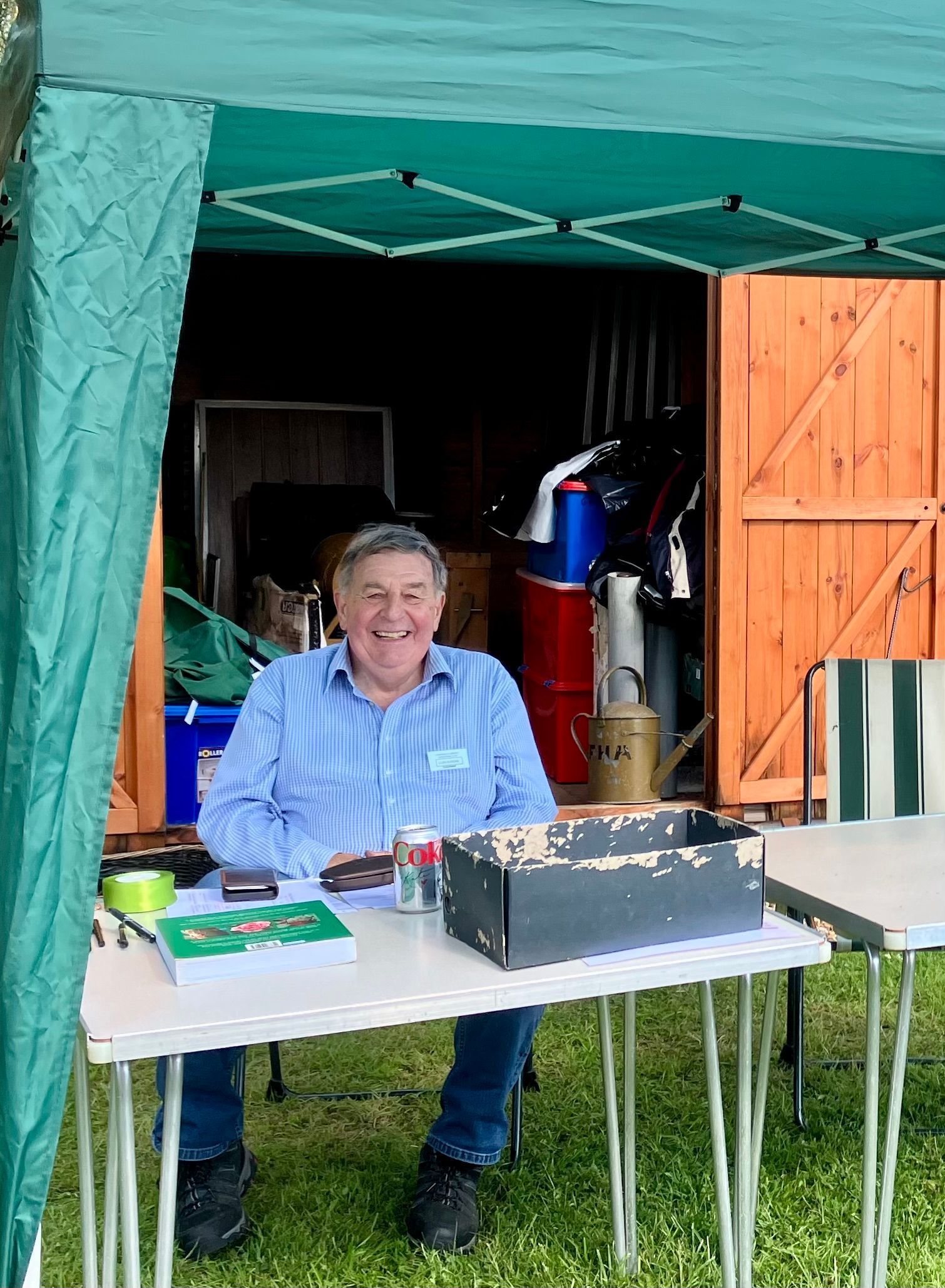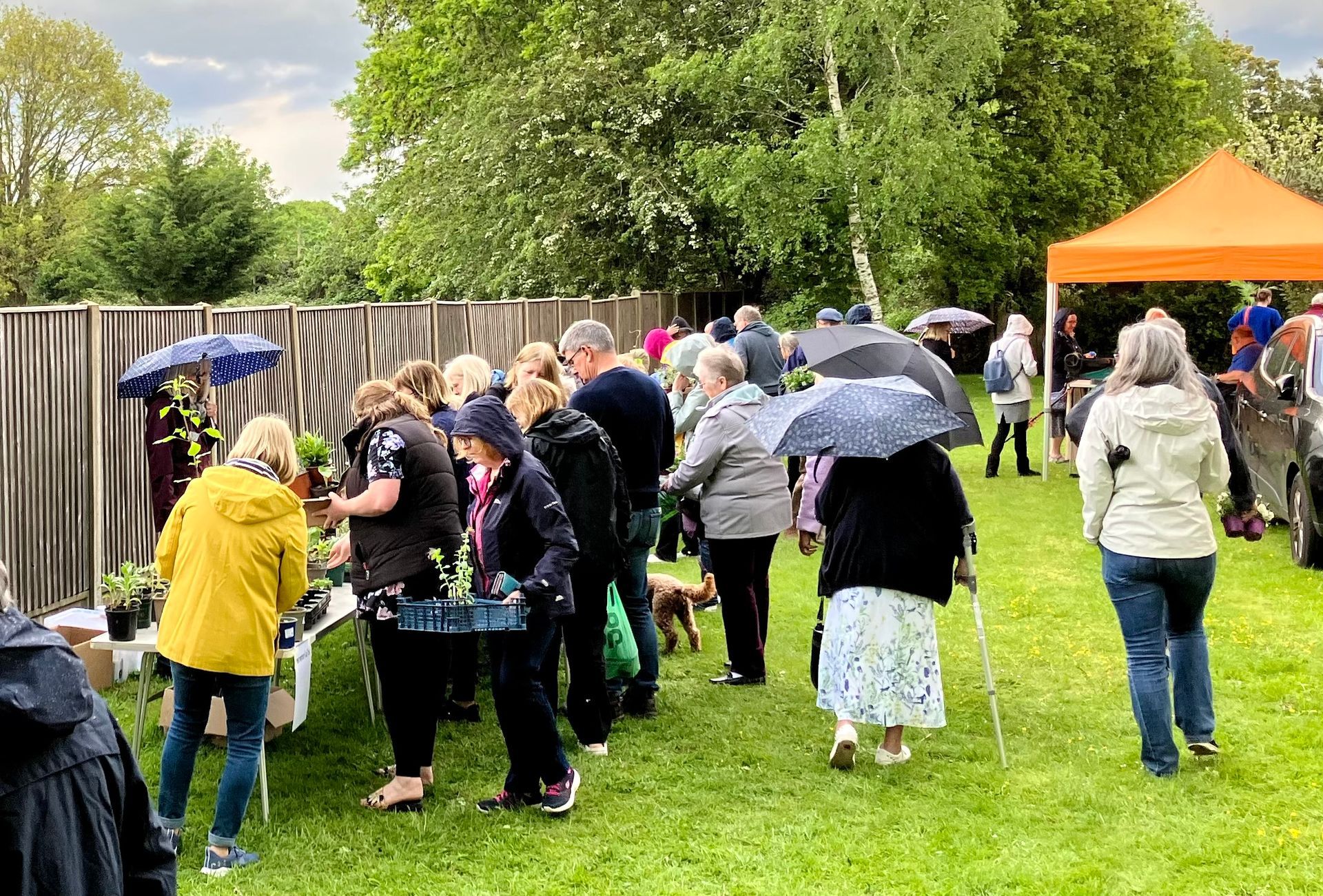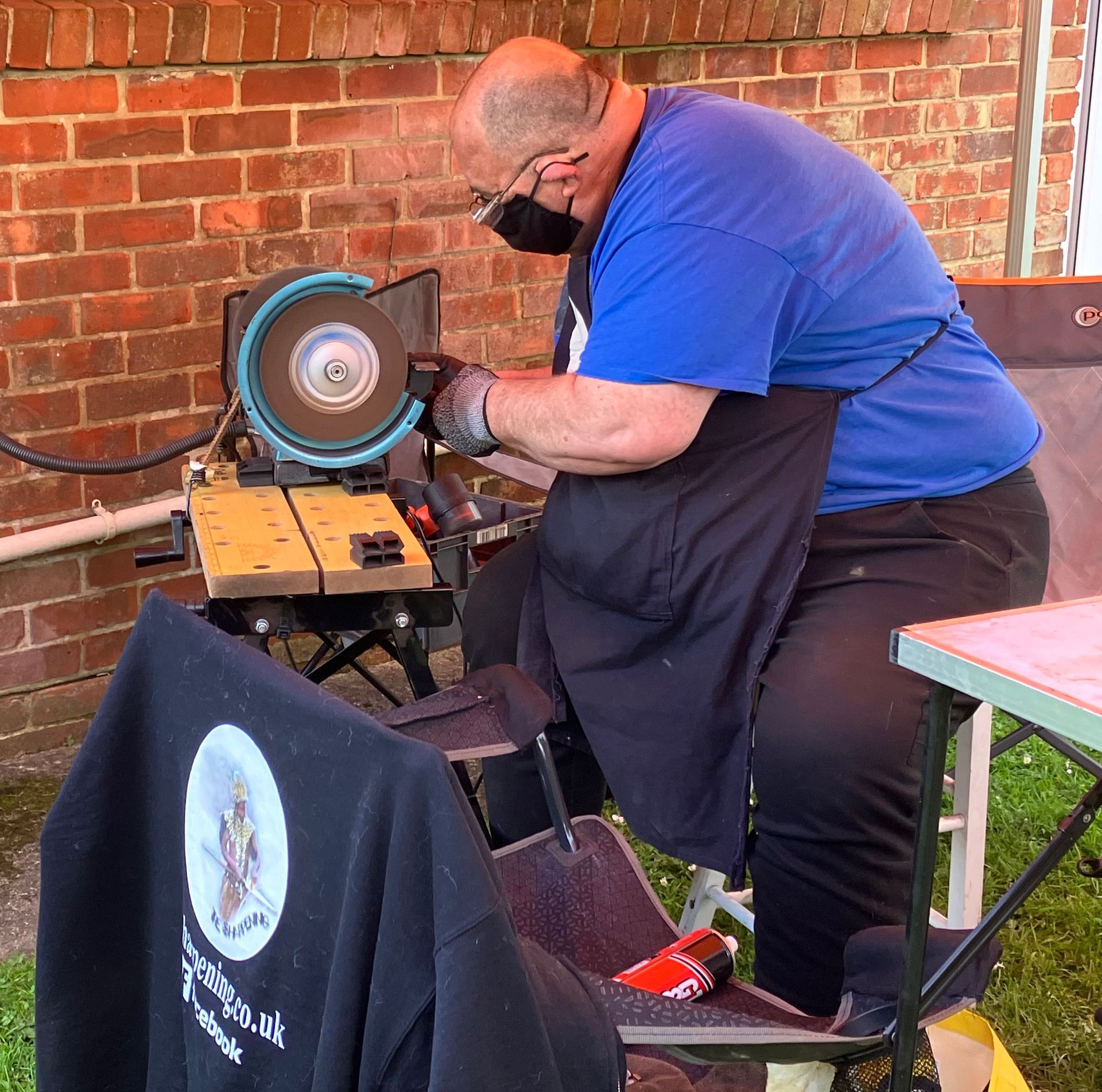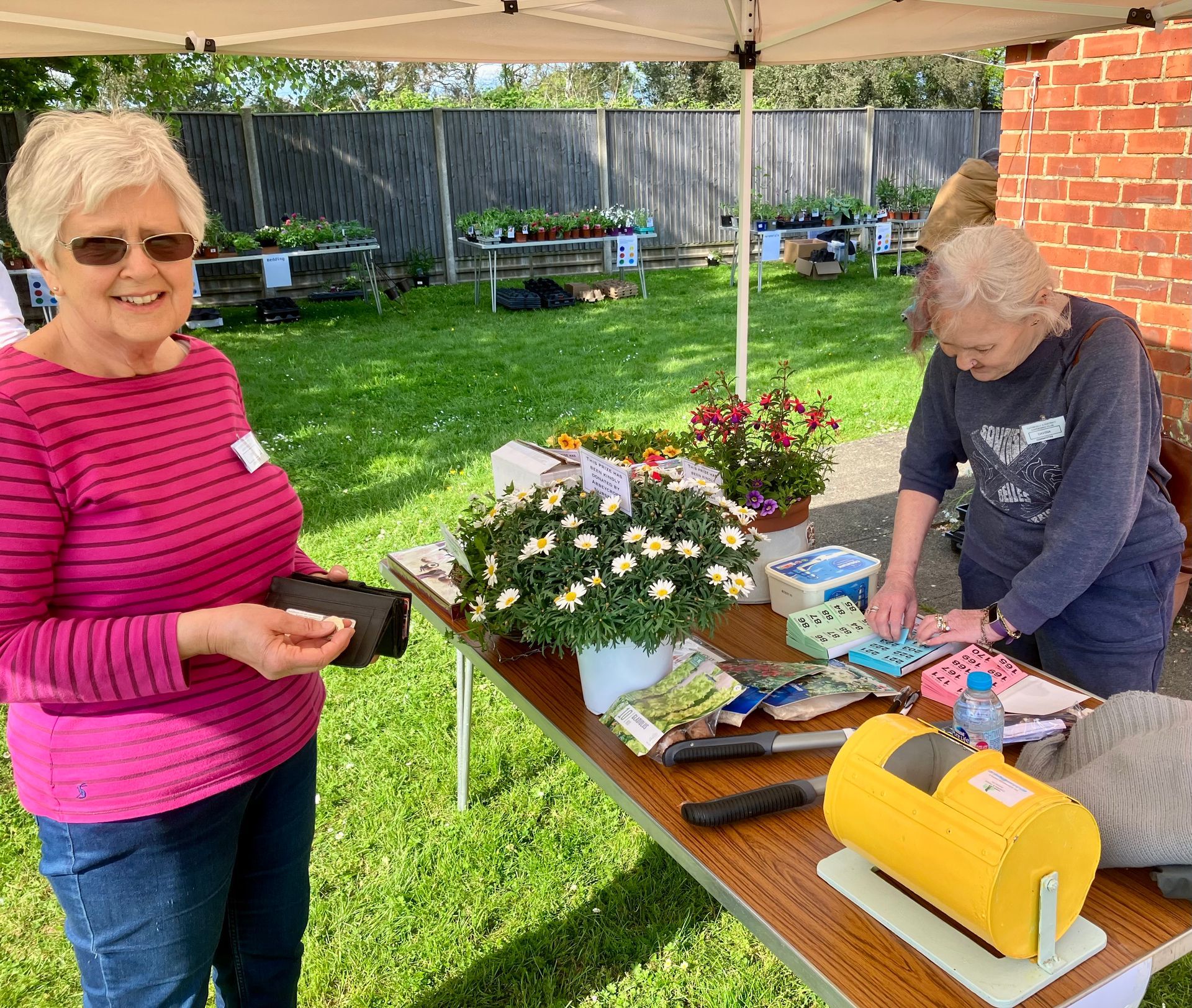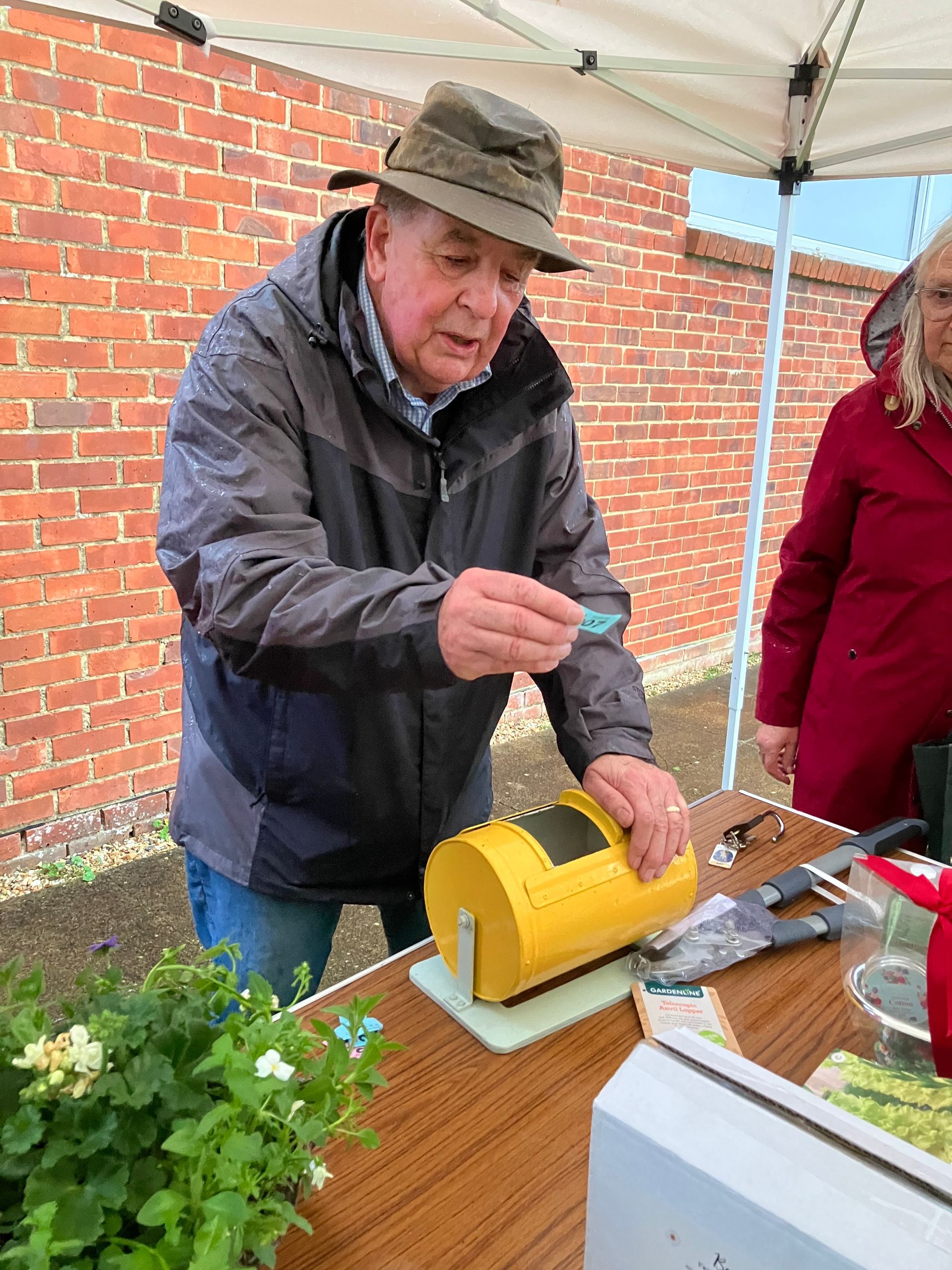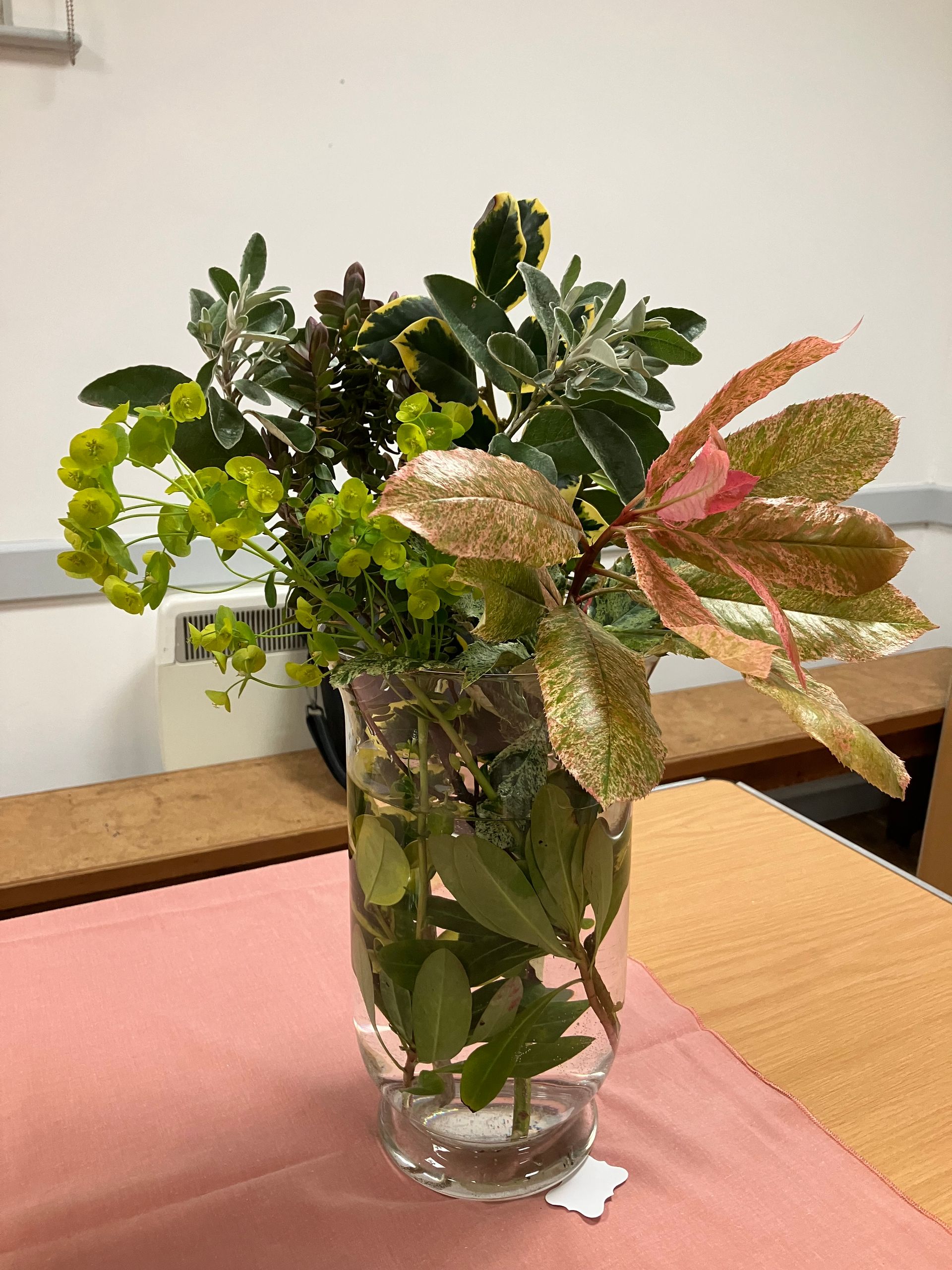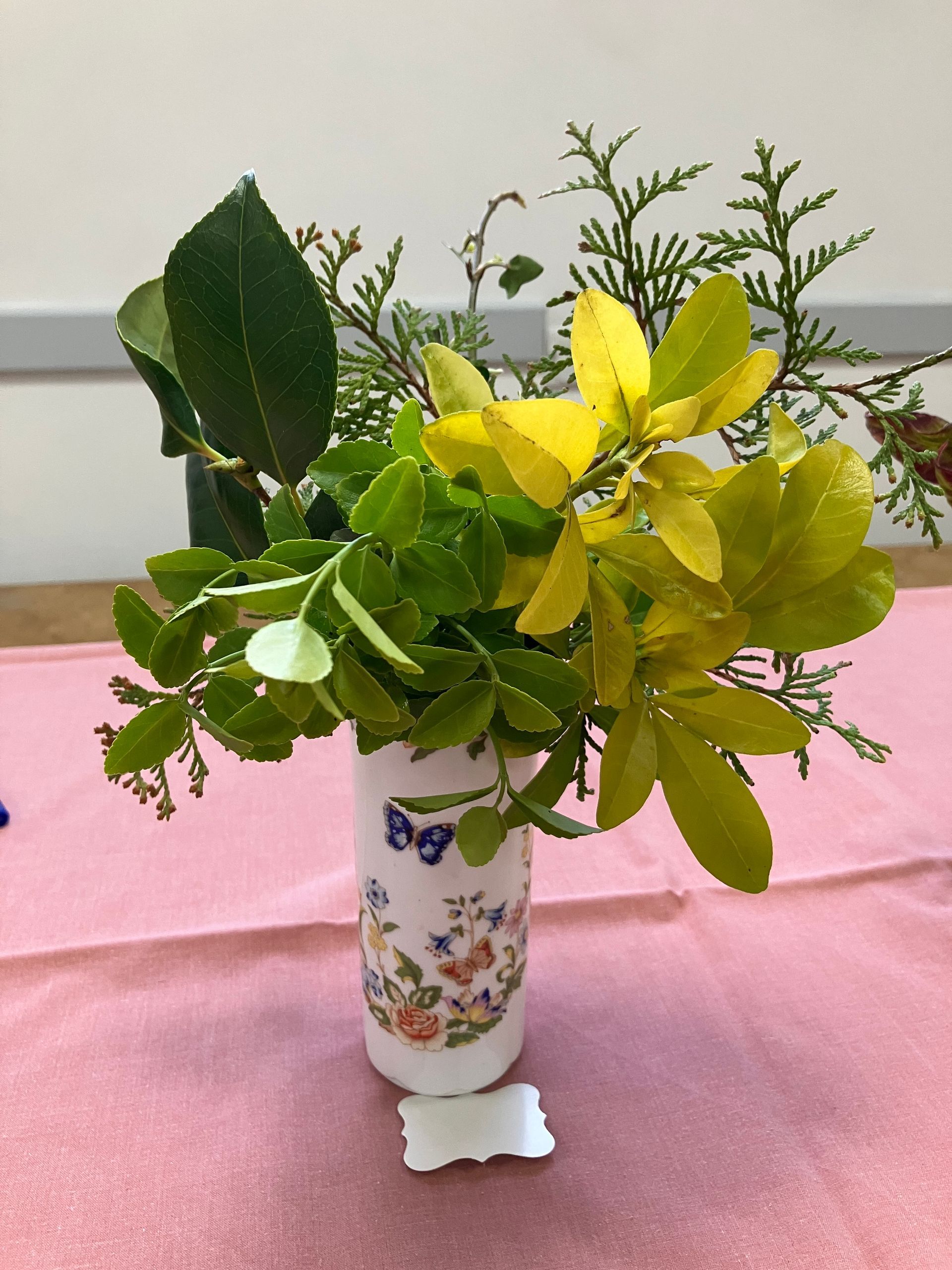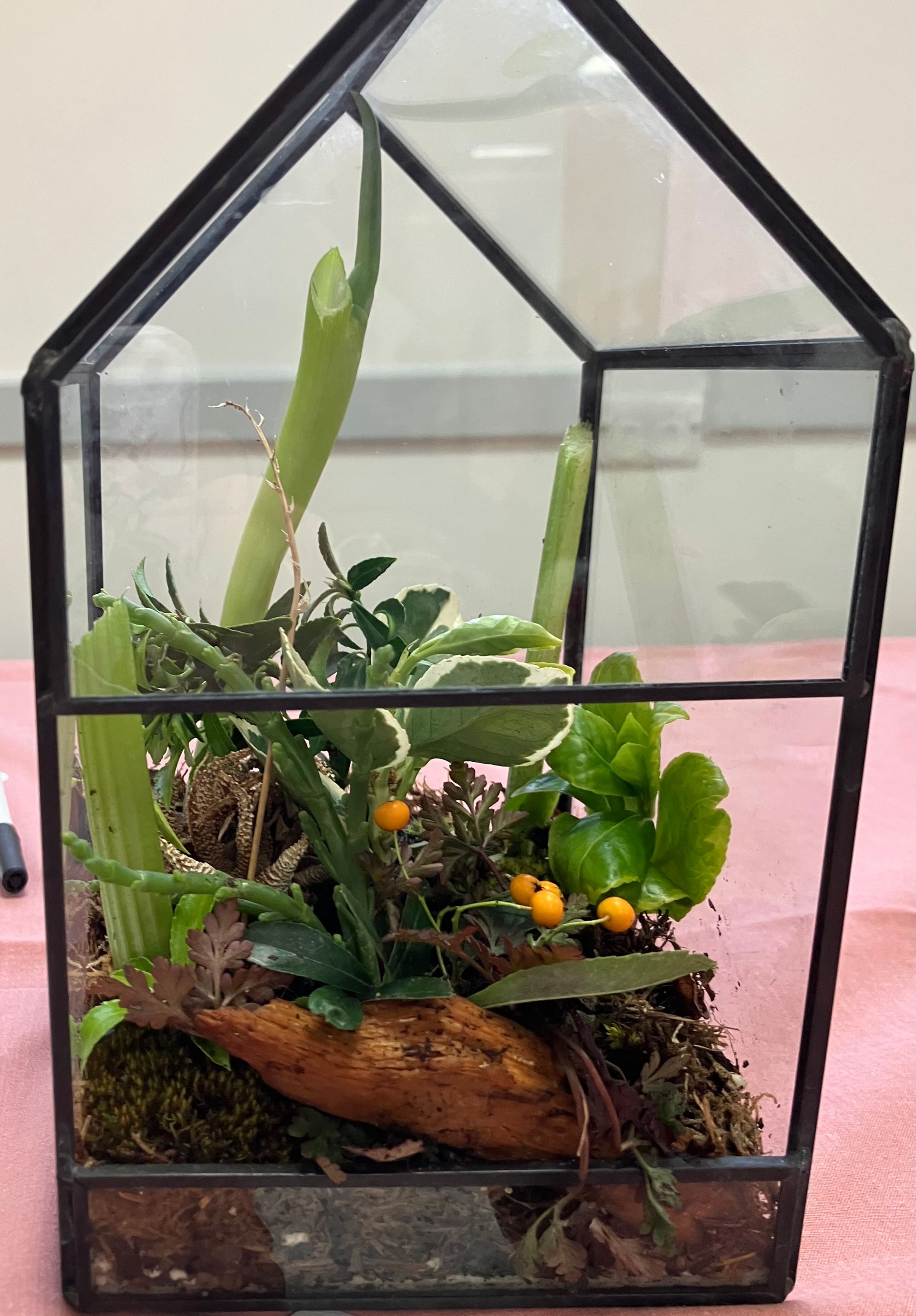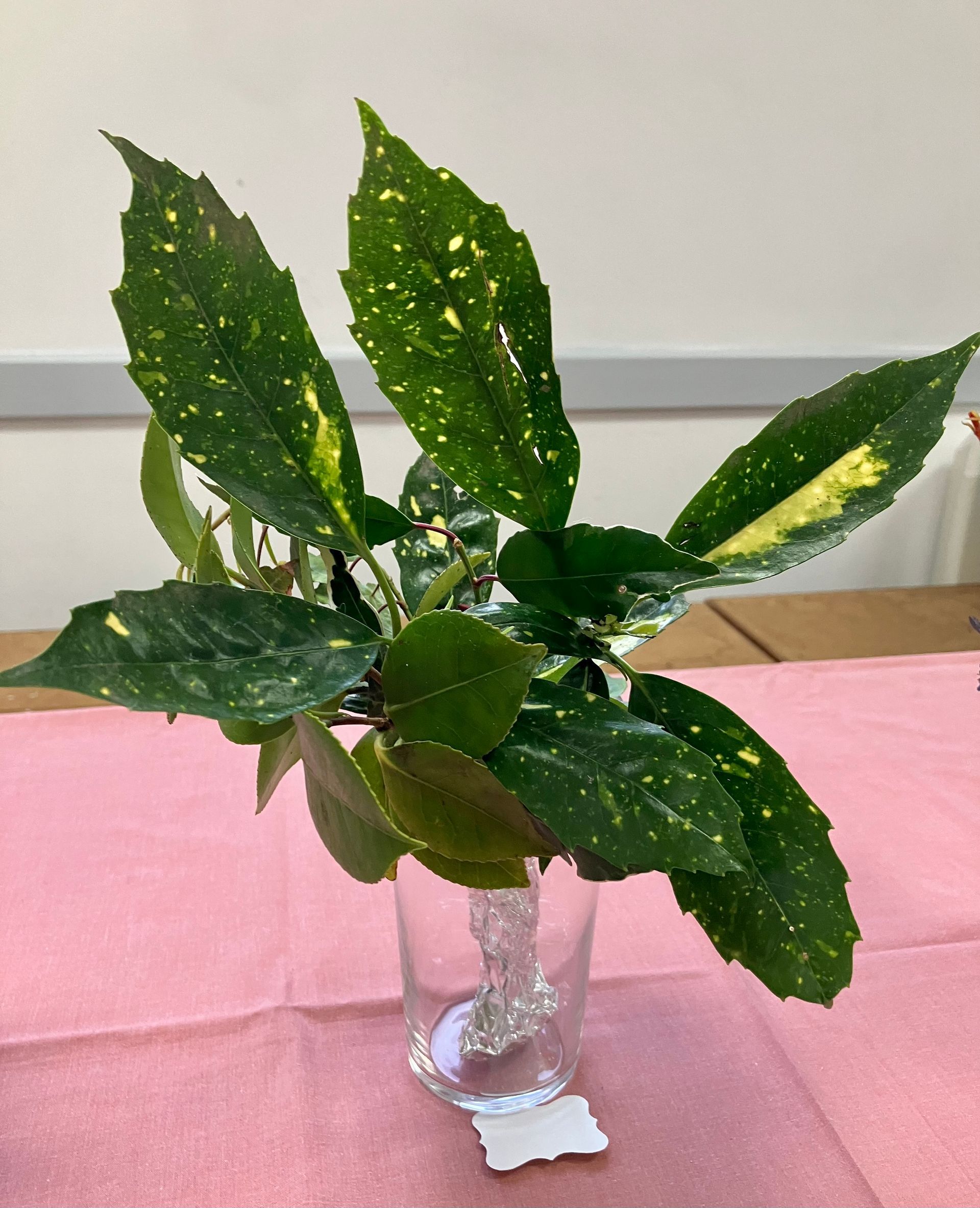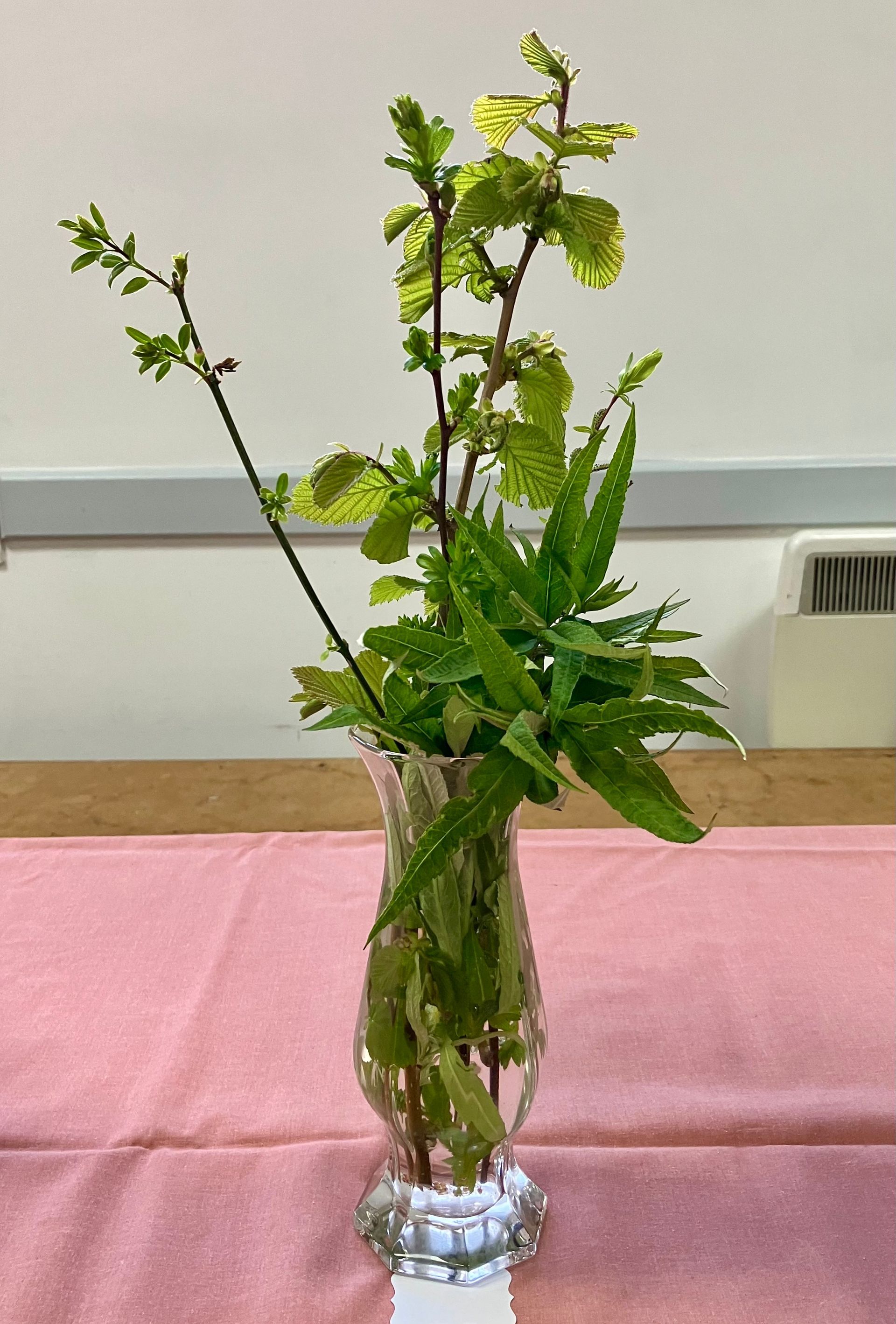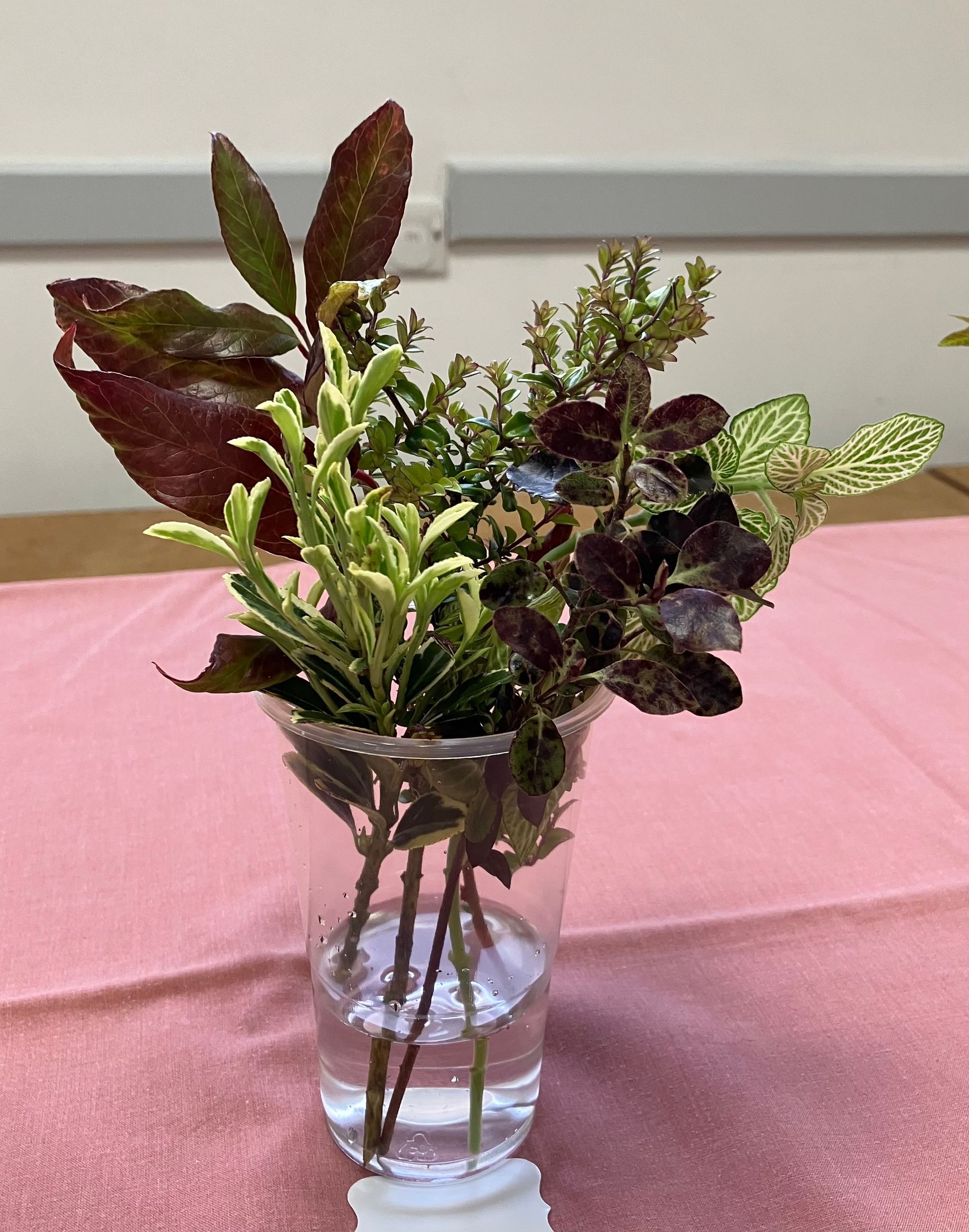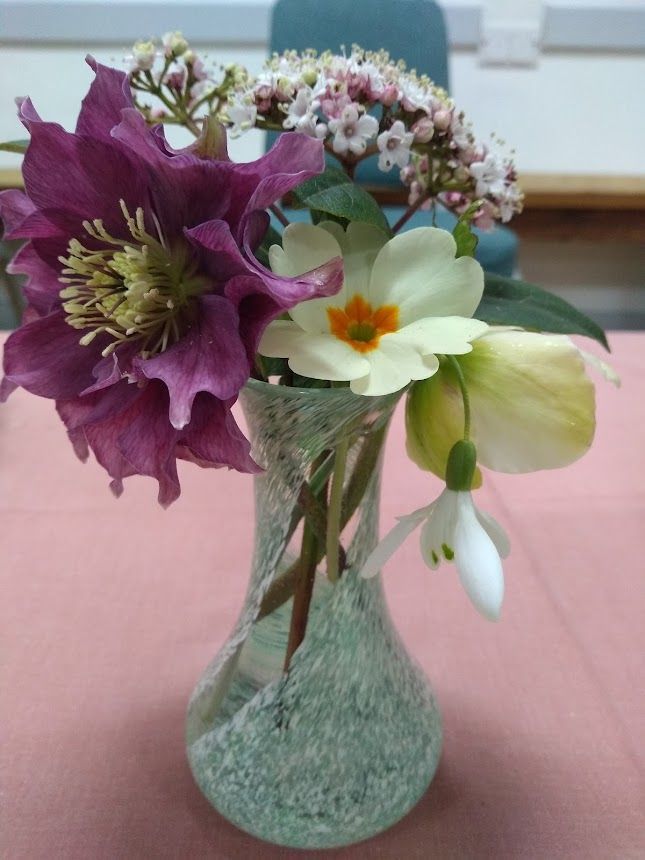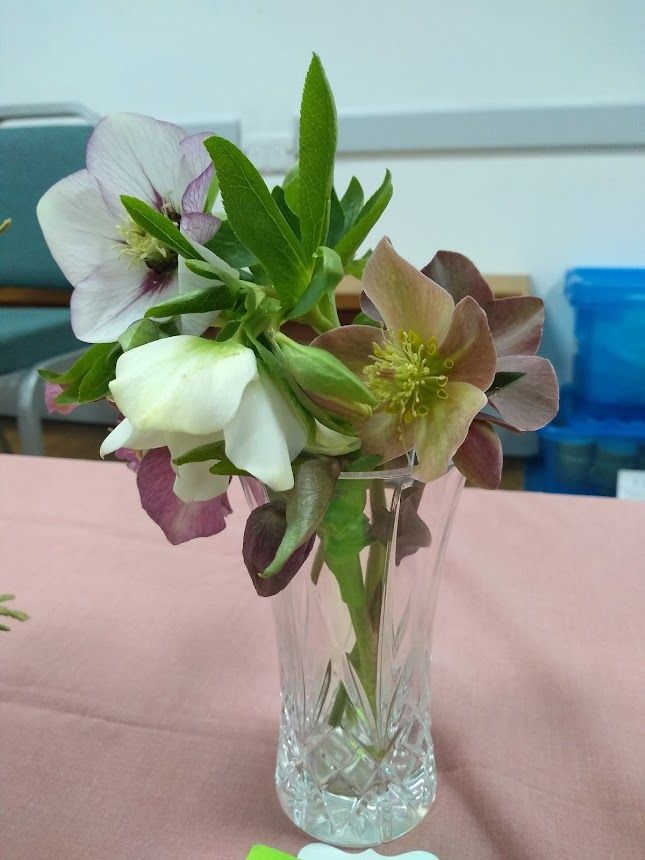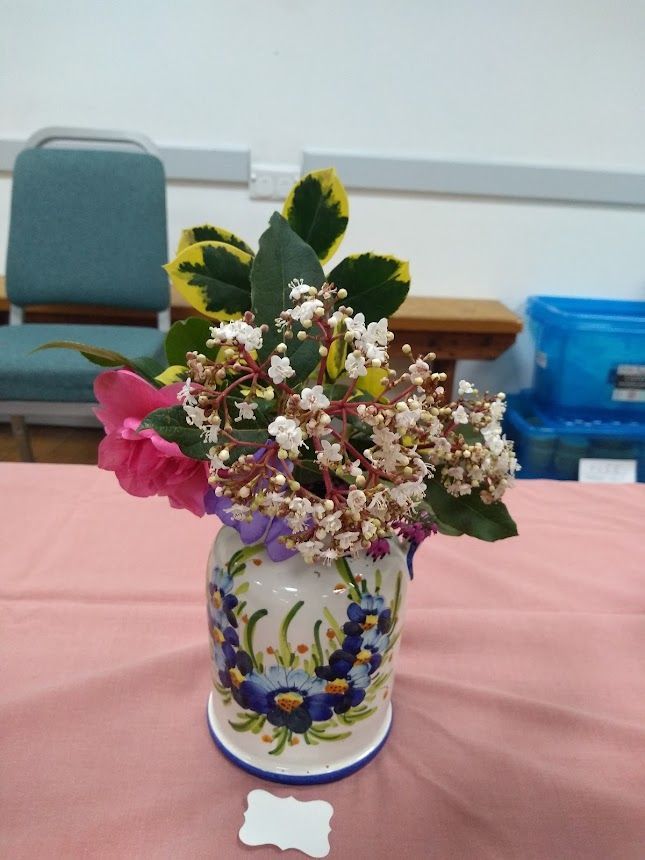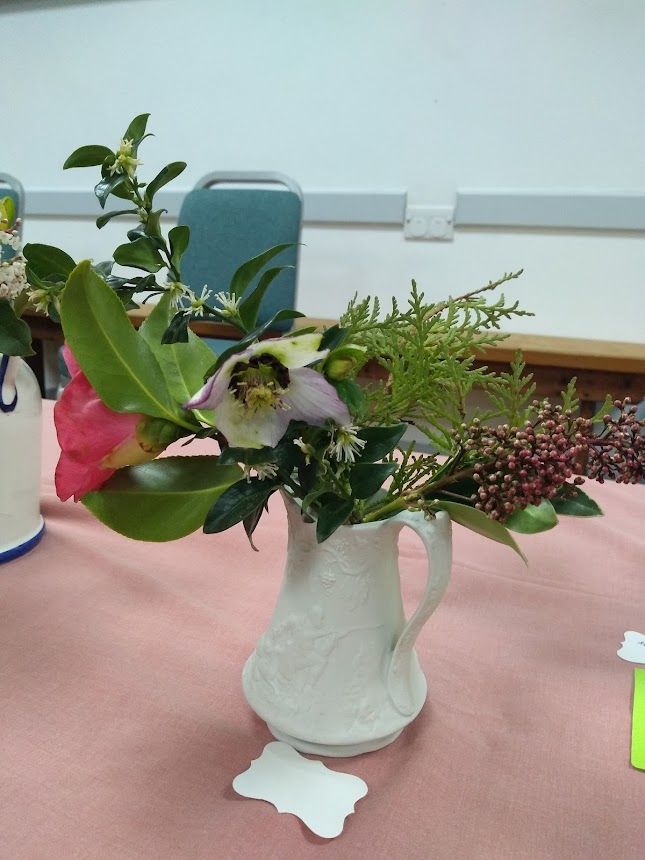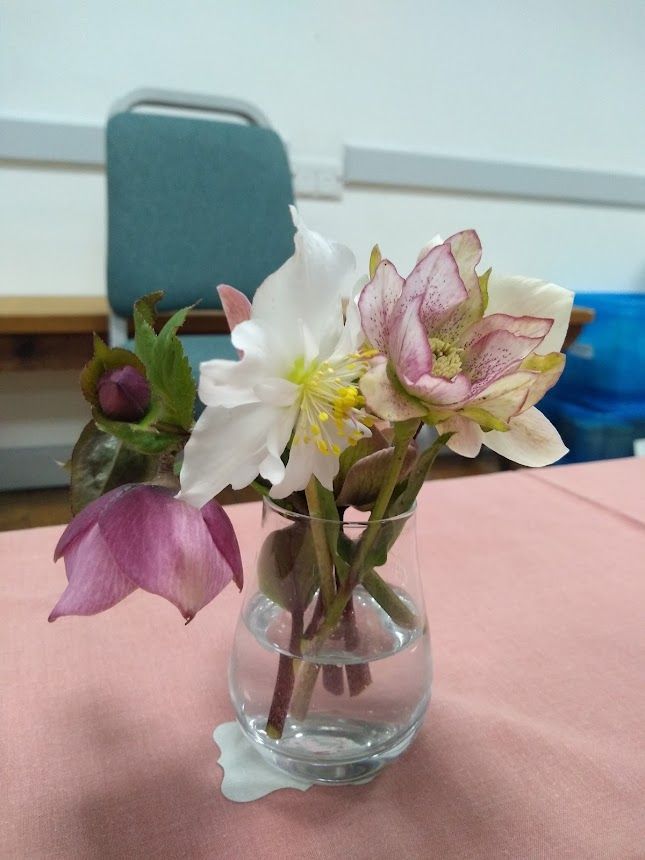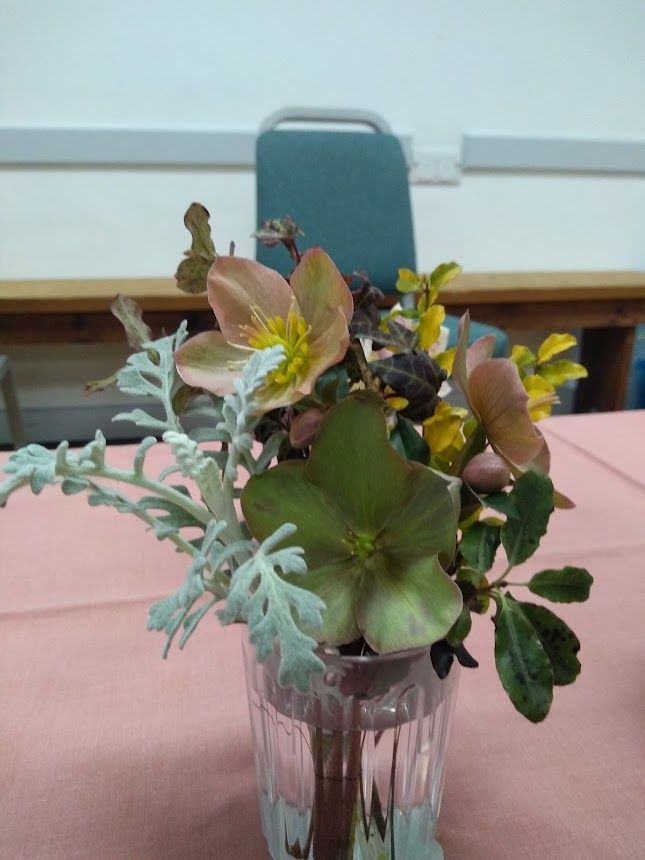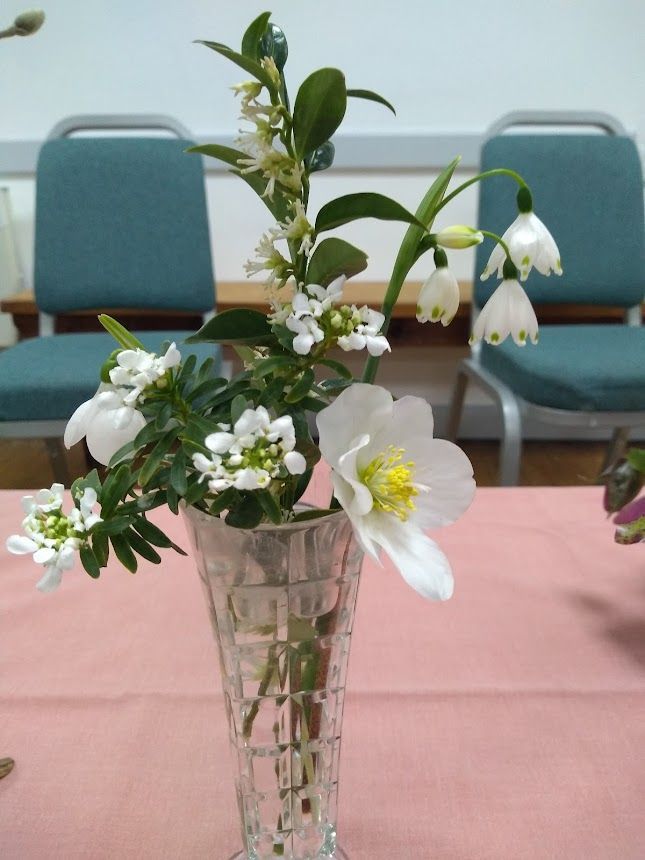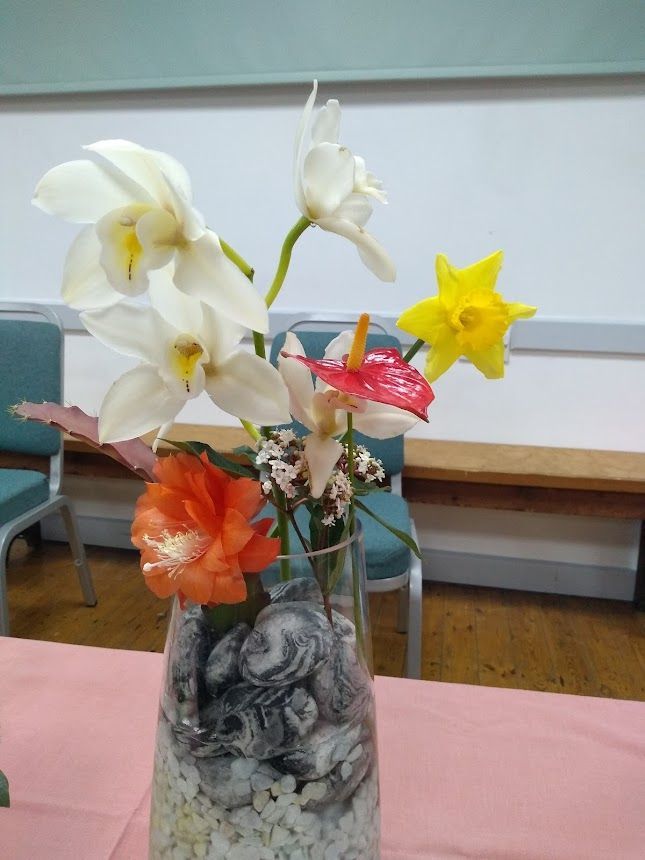- November 2023: Club Annual General Meeting
- October 2023: "Preparing Dahlias for Winter"
- September 2023: "The Darien Gap – a haven for orchids, terrorists and kidnappings"
- August 2023: "The Gardens of Japan"
- July 2023: Visit to Longstock Water Gardens
- June 2023: The Secret History of Vegetables
- May 2023: Coronation Celebration and Club Sale
- April 2023: "Growing Vegetables"
- March 2023: "Container Planting With Bulbs for a Year of Colour"
- February 2023: "Right Plant, Right Place"
Photos above: The retiring committee on stage, Glenn presents Davina with her Banksian Medal, members selecting from the buffet
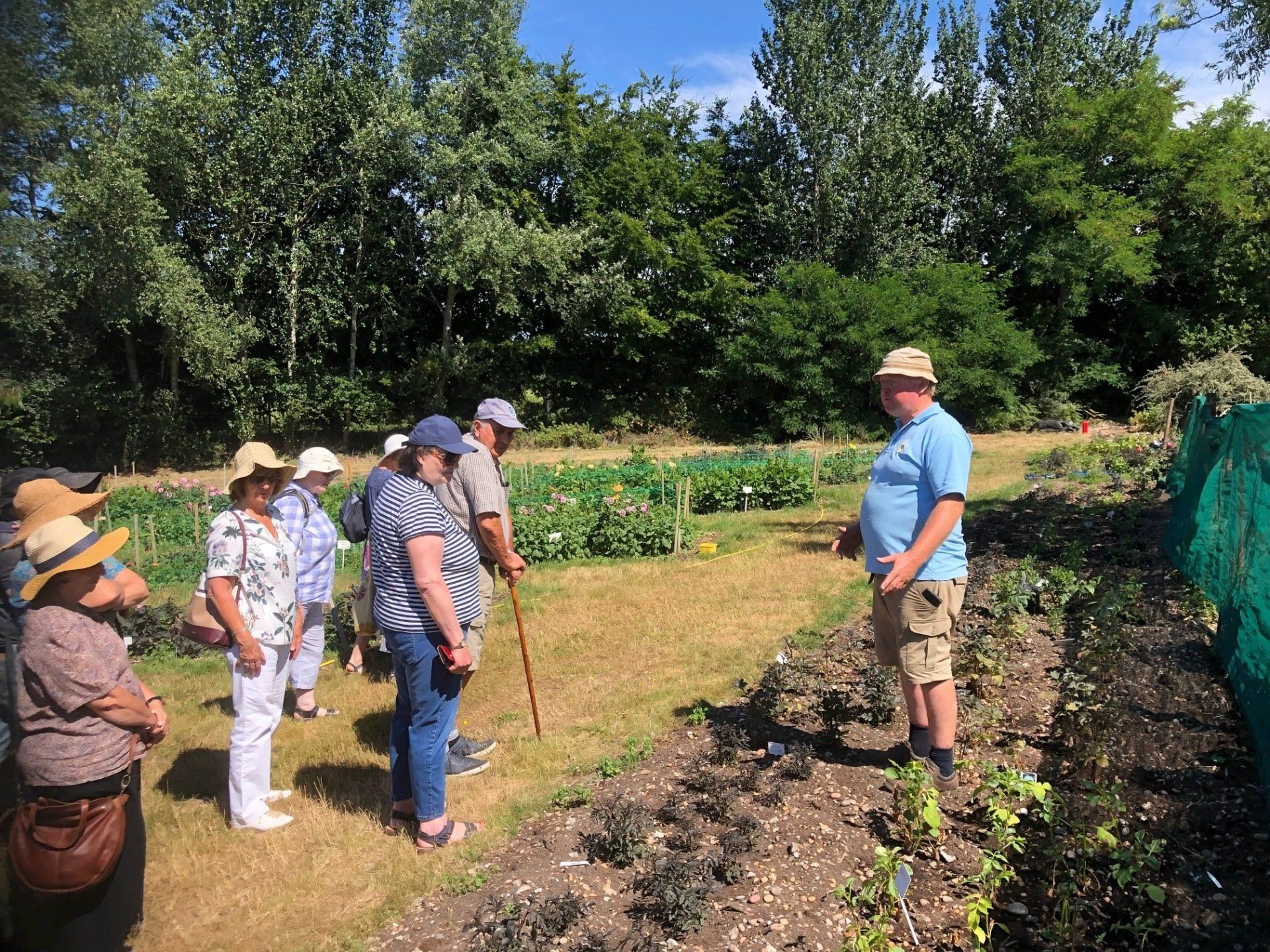
Photo above: Nick Gilbert speaking to Club members on our 2022 visit to Gilbert's Nursery
- 2 weeks after the first hard frost of the year, remove stems to 6-8 inches and dig up the tubers
- clean them gently but thoroughly to remove all soil, leaving feeder roots in place
- allow tubers to dry thoroughly, outdoors if possible
- cut stems off and store in a dark, dry place e.g. wrapped in newspaper or in boxes
- check the tubers around mid December and cut off any parts showing signs of rot with a sharp, disinfected knife
- in mid February cut off feeder roots and put the tubers in a pot of compost, leaving the crown exposed. Do NOT water the compost.
- in mid-late March plant the tubers outside, 6-8 inches deep, feed with granular fish, blood and bone or equivalent feed. Mound the soil up a little over the plants.
- For dahlias in pots
- cut stems to just below the surface of the compost
- bring under cover e.g. a shed or frost free greenhouse and cover pots with newspaper. Do NOT water the compost
- in March uncover the pots and start watering
- move pots outside when all chance of frost is over
UPDATE SEPTEMBER 2024
Club Member Sharon M has shared with us the photos below of dahlias which she raised from the seeds she obtained at this meeting:
Photo above: Club Chair Glenn Duggan addresses the Club
Photos zbove left: Club Chair Glenn Duggan speaks to speaker John Barker. right: June Colley, hosta expert and supporting speaker.

We sold just over £50 of plants, and we recruited a new member. Thanks go to Glenn, Doug, Edward and Davina for braving the rather awful weather. Photos of the event are below.
.
Our other event in May was our annual fund-raising sale.
The sale was opened by our lovely Patron, Fred Dinenage, in front of a crowd of eager shoppers. It was extremely succesful, eventually raising a massive £811.11 - a new record for us - made up as follows:
- Plants £583.11
- Raffle £137.00
- Admission £41.00
- Sharpener £50.00
Of course nothing ever goes completely smoothly. Early rain meant our President Doug had to protect Fred with his giant umbrella, and rain as we were clearing up left most of the committee and helpers looking like drowned rats. At one point Vanessa's adorable dog, Benji Edison, managed to get a £1 sticker on his nose, but fortunately nobody attempted to purchase him! A few photos from the event can be seen below:

Above: Ray Broughton sharing some of his hints and tips
Ray clearly had a huge amount of knowledge on this subject, sharing a large amount of information about how to improve our vegetable growing and combat pests and diseases with a strong focus on using natural methods. A few of his tips were:
- Pest control
- Aphid control: ladybirds kill aphids, if you want to increase the number in your garden he recommended purchasing 2 spot ladybirds as these are not keen on flying so are more likely to stay in your garden.
- Lots of people plant marigolds close to their vegetables to deter pests. It's actually the dead flowers which pests dislike so don't deadhead them, or if you do scatter the dead flowers nearby.
- Don't use nasturtiums as companion plants, they actually attract pests.
- Pots
- Root trainer modules encourage seedling roots to grow downwards.
- Peat free compost discs ("flats" are now available and are great for growing seedlings, enabling them to be planted out with minimum root disturbance.
- Watering
- Water butts may harbour diseases which can cause seedlings to "damp off". Clean them annually and test the water by using it to try to germinate a few cress seeds, they should germinate within a day or two if the water is healthy.
- Rubber hose pipes can emit chemicals which damage plants. If you store them indoors over winter do so in a shed rather than in the greenhouse.
- Tool Maintenance
- Good quality tomato ketchup is good for cleaning tools such as secateurs and hedge trimmers, Coat them in the ketchup and leave it for 4 days before rinsing off.
- containers are a good way to grow bulbs because you have full control over the growing medium and nutrients.
- bulbs need feeding from when the leaves appear until they die off, but particularly during the flowering period. Continuing to feed them while leaves remain green helps feed the bulbs themselves and increase their size.
- larger bulb size (when compared with bulbs of the same type) means more flowers.
- all bulbs dislike being waterlogged.
- containers can be planted with a mixture of different bulbs, or with layers of the same type with the largest bulbs at the bottom to extend the floweirng period.
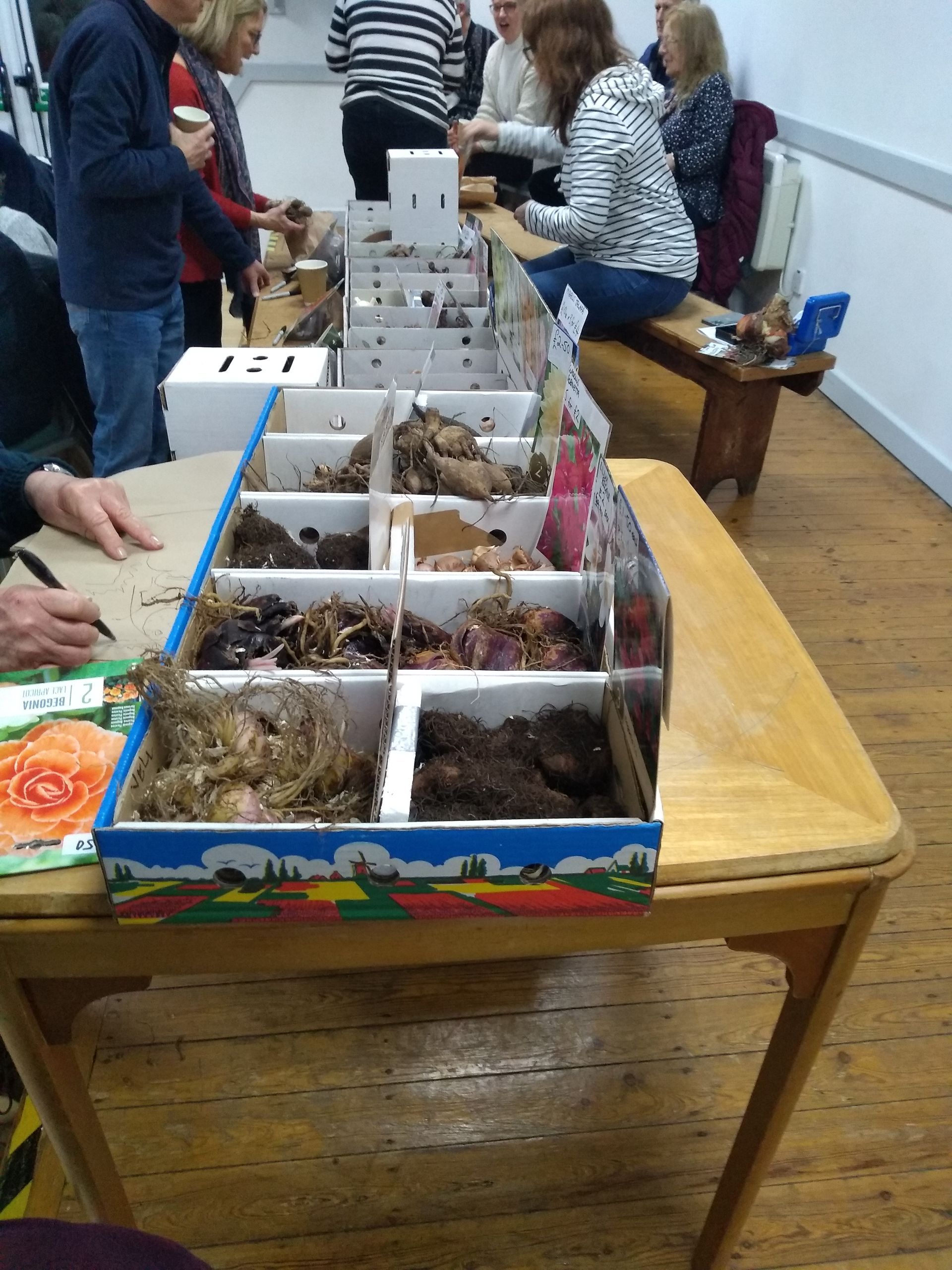
Above: Members enjoyed looking at and purchasing a range of bulbs
In terms of specIfific plants:
- Dahlias - these are easy to grow, remove dead flowers for more and longer lasting blooms. They are frost tender, and when first planted are susceptible to root scorch so avoid planting into freshly fertilised soil. Young growth is attractive to slugs so be vigilant. There is lots of information online about how to over-winter dahlia tubers but if you have free-draining soil try simply covering them with a layer of mulch as there's a good chance they'll survive in situ and if they don't replacement bulbs are inexpensive.
- Lilies - these are very hardy so can be kept in the soil. Oriental, Trumpet and OT or Orienipet varieties are highly fragrant. Most prefer full sun Martagon varieties are tolerant of partial shade.
- Begonias - tuberous begonias are not fully hardy, but for a long flowering period they should be planted early - in March or April - indoors or in a greenhouse. Their colours are all in the red / yellow / orange pallet. Plant these bulbs concave side upwards, or if you can't tell which side this is plant on their sides.
- Colocasia - also know as "elephant ears", these add attractive foliage to your container.
- Tulips - the flowers will diminish year on year, but the bulbs will divide and produce new ones so planting these out in the main garden will create a continuous display in the long term with different bulbs developing at different times.

Above: Tom Woodland answers members' questions

Above: Chris Bird
Above: Glenn presents a copy of the Club's 60th Anniversay Miscellany to Fred

